Leaving Ourazazate for Marrakesh, we crossed the Atlas Mountains, reaching the highest altitude of our entire trip-7,000 feet. I was so thankful for Mustapha, our amazing driver, as we made sharp turns on the steep road. At times, the narrow road seemed to be carved into the side of the mountain. This challenging road is the main north-south route to move goods from one part of Morocco to the other. It was a beautiful drive with amazing views, but I would not want to drive it on a regular basis.
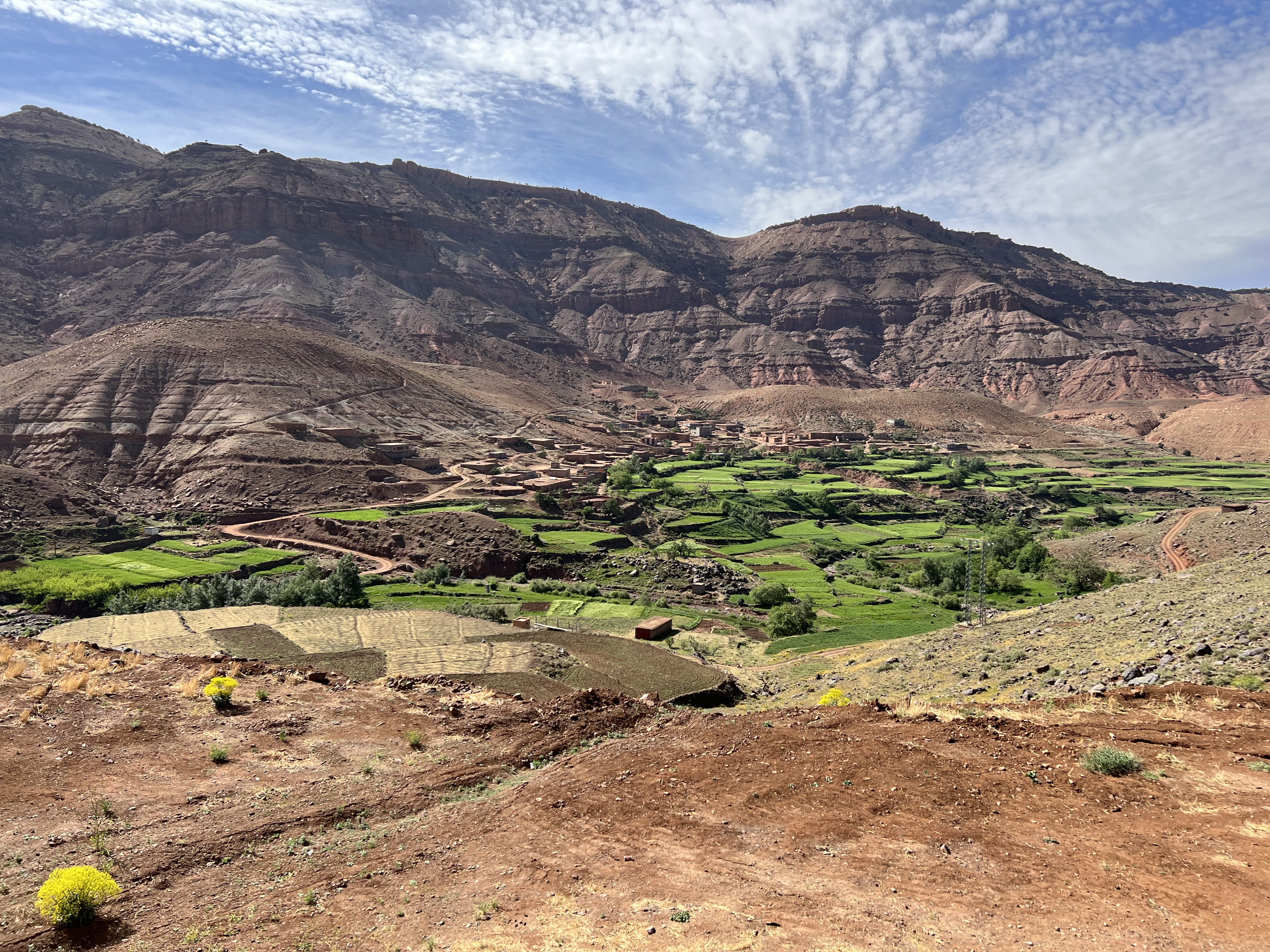
Along the way we stopped to watch local women making argan oil. One women worked at each of the four stages of the labor-intensive process. Producers make argan oil from the kernels of the argan tree which only grows in southwestern Morocco. It is good for a long list of cosmetic and health needs.
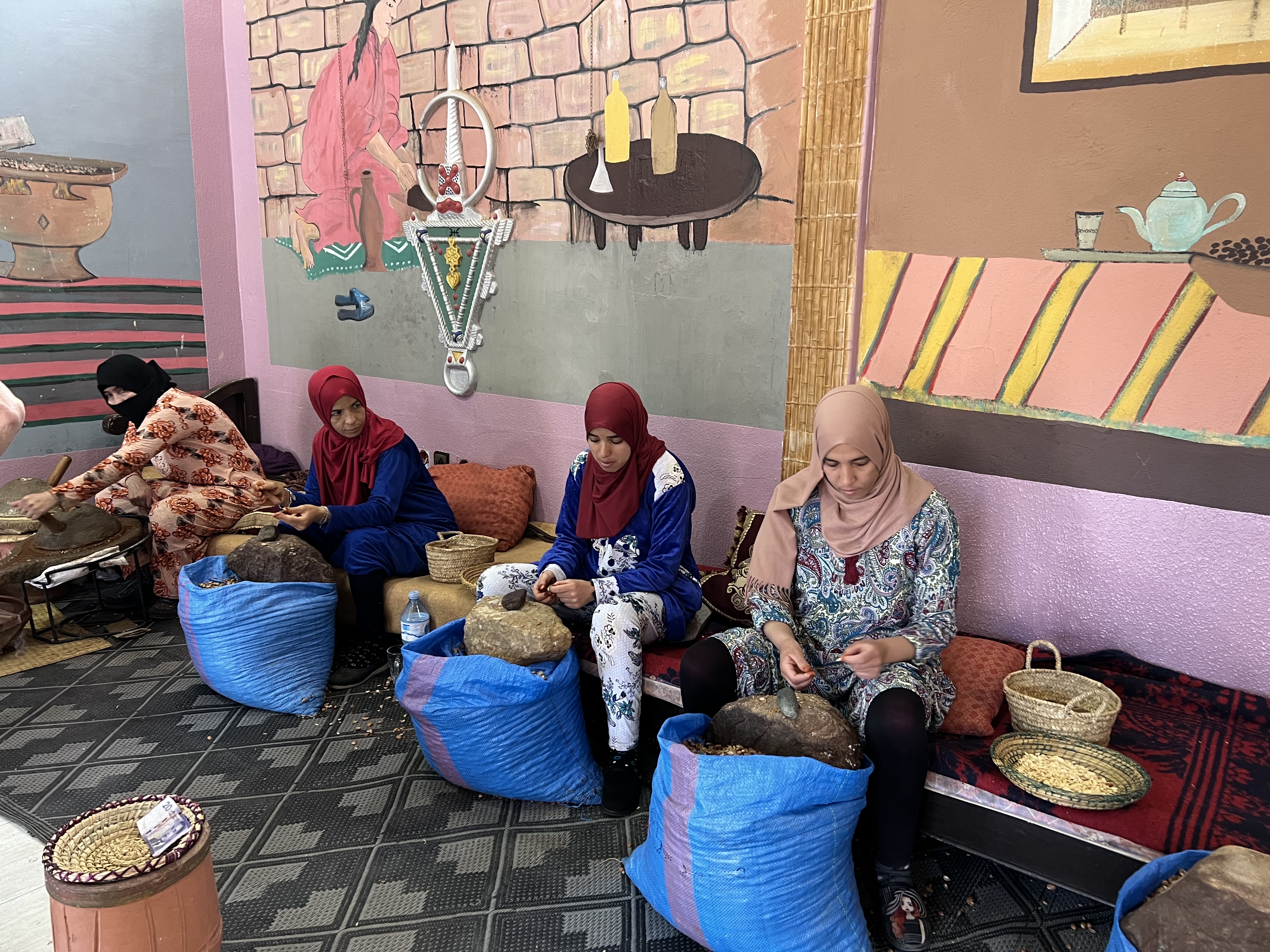
Welcome to Marrakesh
The drive in to the city of Marrekesh was beautiful. Palm trees and lush foliage lined every street. We got our first glimpse of the the Kutubiyya Mosque and its landmark minaret. The minaret is the tallest structure in Marrekesh. The government prohibits any other building from being taller.
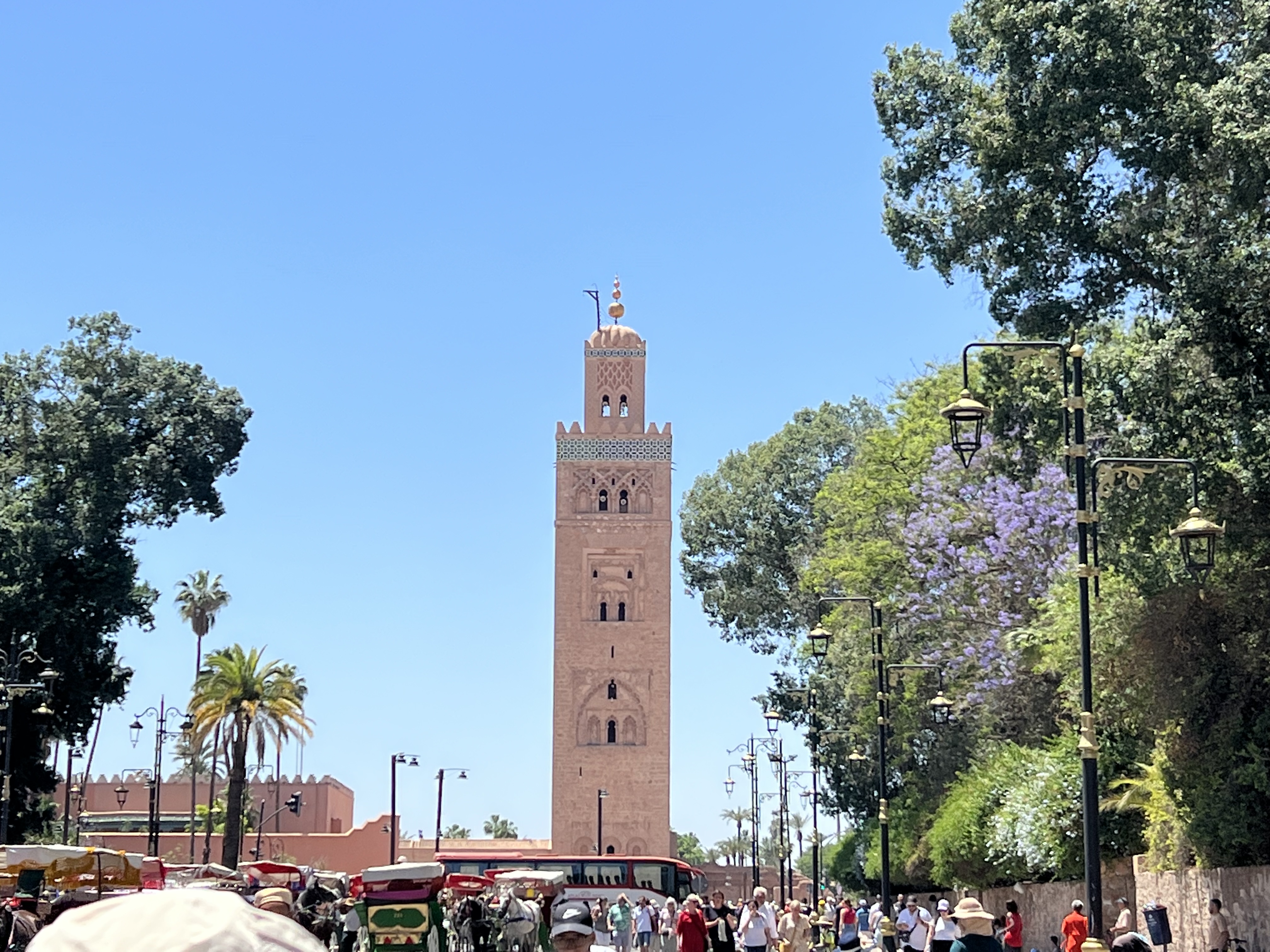
After settling into the lovely riad where we will be staying for three nights, we visited the Bahia Palace. The mid-to-late 19th century palace was the home of the Sultan. He named the palace after his favorite wife who gave him a son. Intricately painted cedar wood lines the ceilings and tops of the walls.
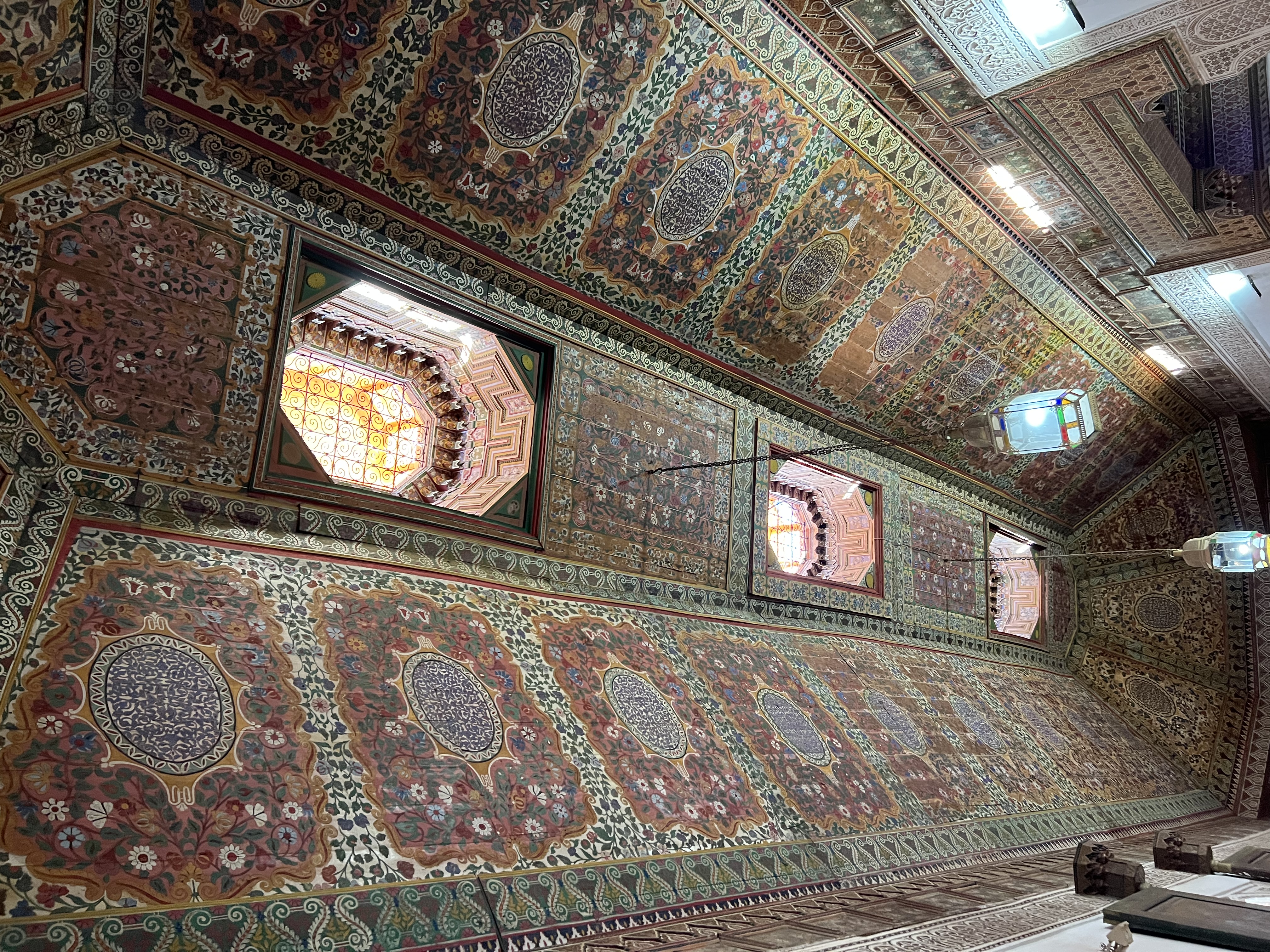
I thought the space for the Sultan’s harem was interesting. In addition to the four wives he was allowed, he could also have a harem of other women. Women in the harem were supposed to prevent getting pregnant, but if they did, their children had no rights to inheritance or recognition from the Sultan.
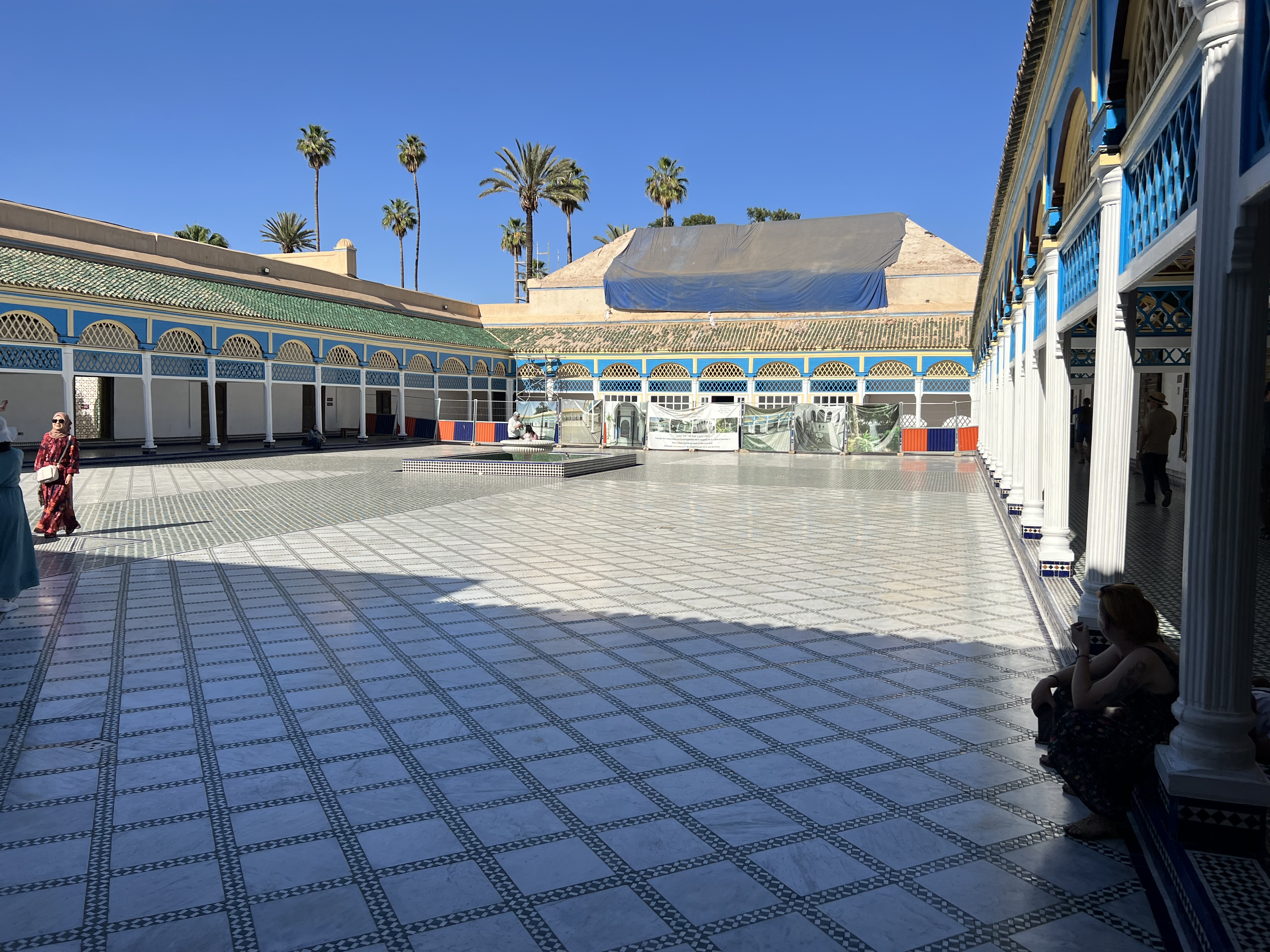
Marrakesh, Day 2
Leaving for our first adventure of the morning, we stopped on the little street outside our riad to talk with Madoujob. He uses his donkey and little cart to move construction rubble out of the narrow street to larger garbage trucks.
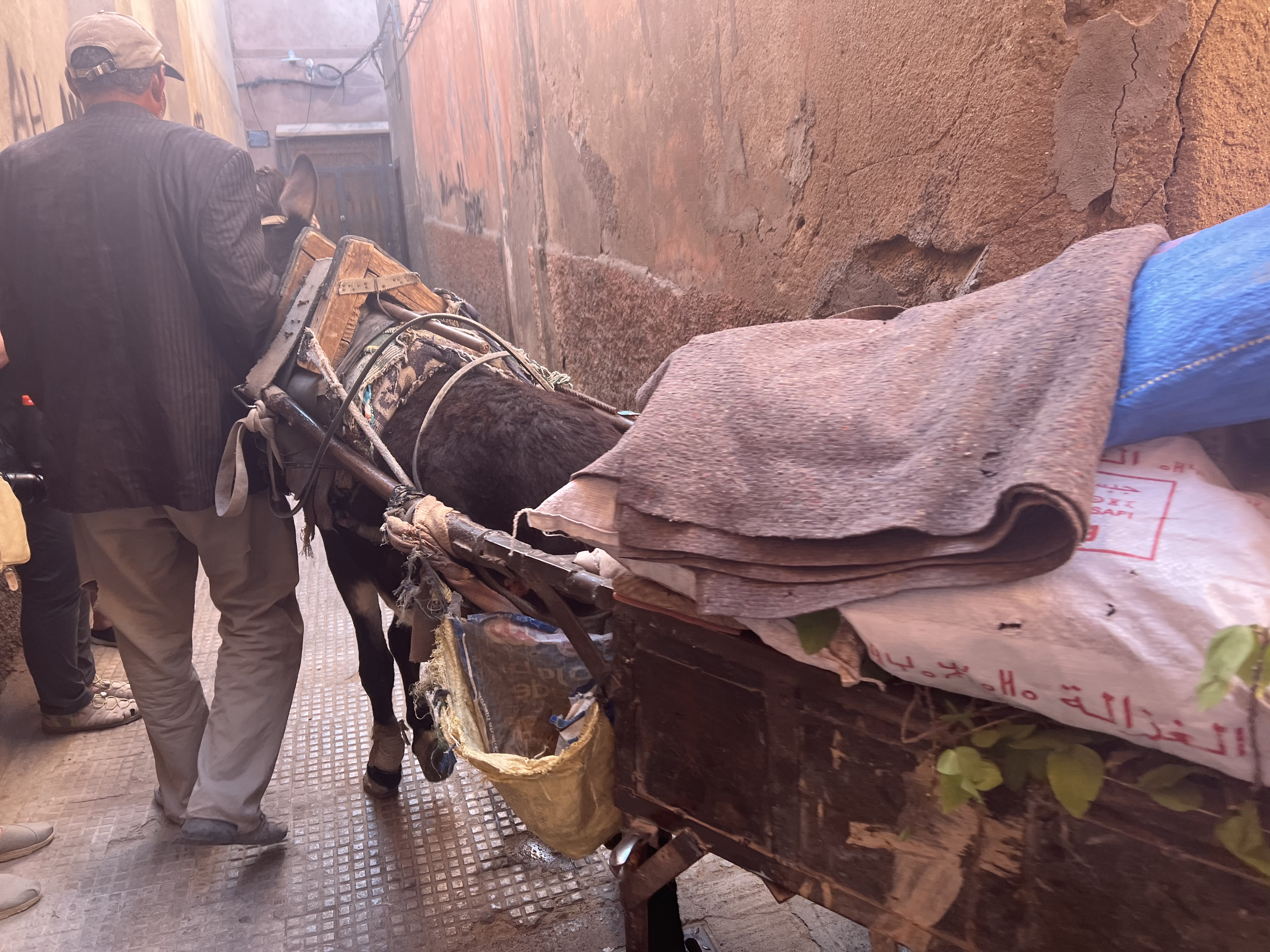
We explored the colorful and very busy market.
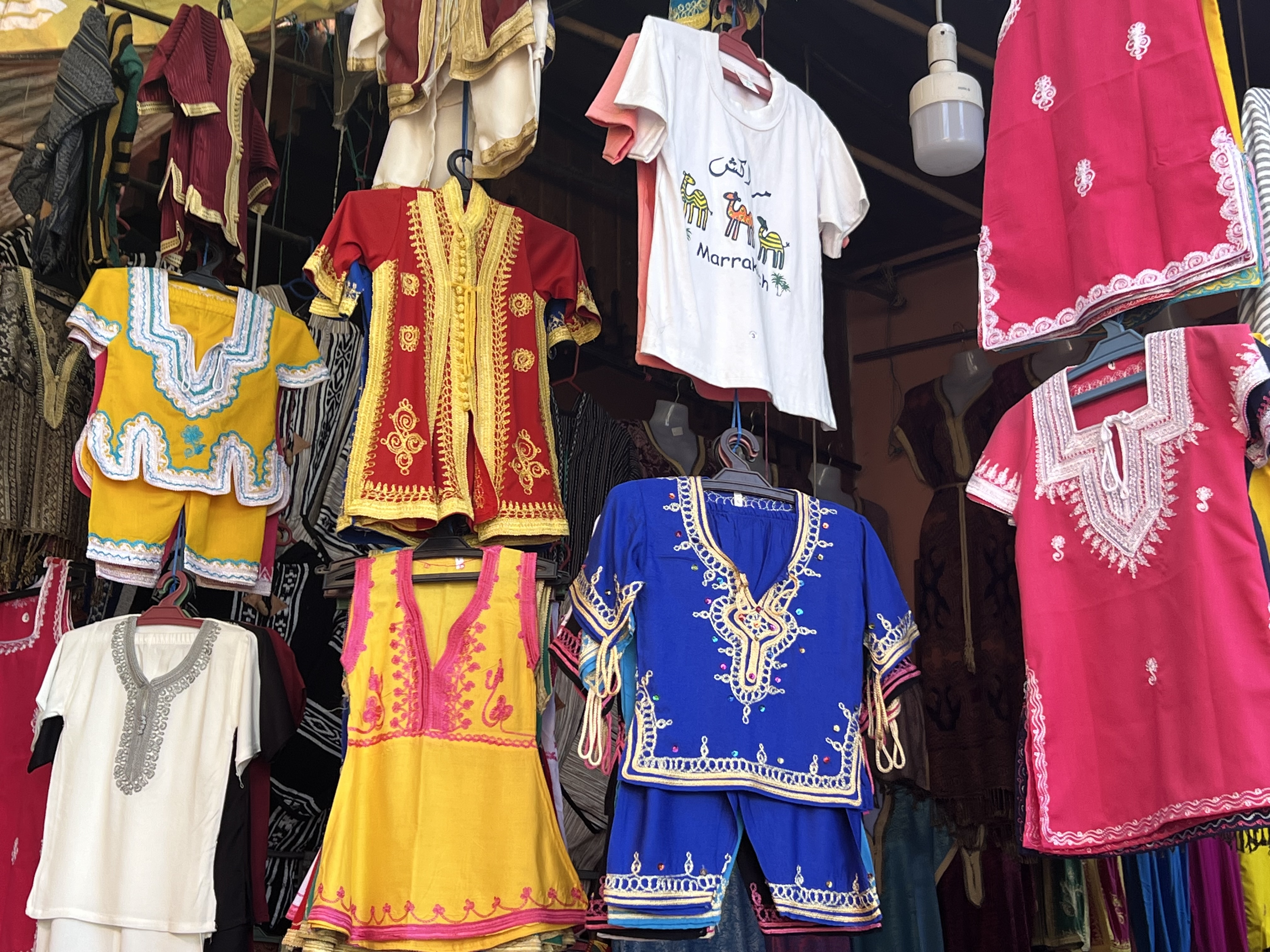
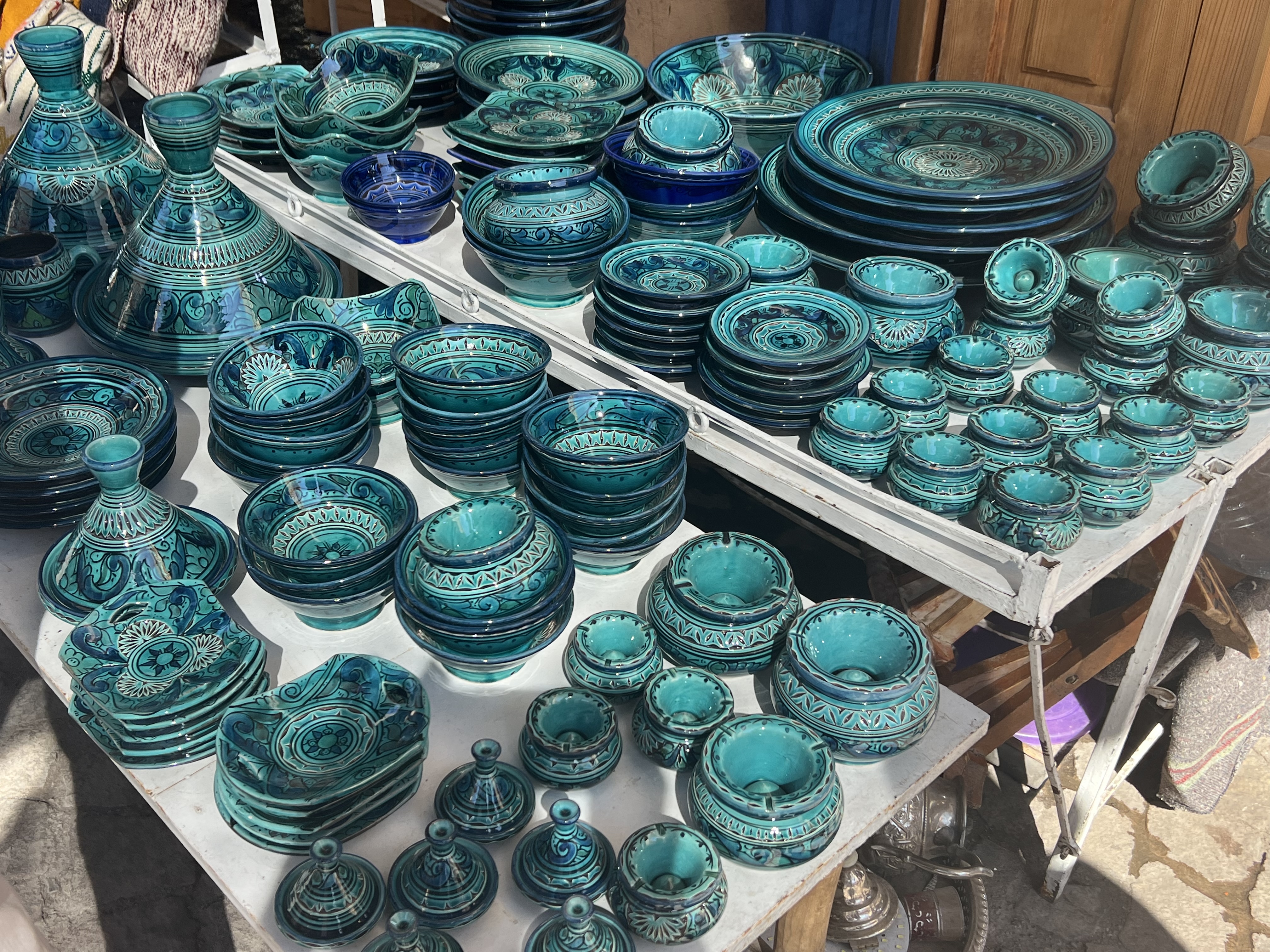
Marrakesh is a city of scooters. They are everywhere-scooting down crowded narrow walkways, pulling carts of goods and weaving between cars and busses. It is pretty amazing how they can weave in and out of all the pedestrians. I never saw a single collision.
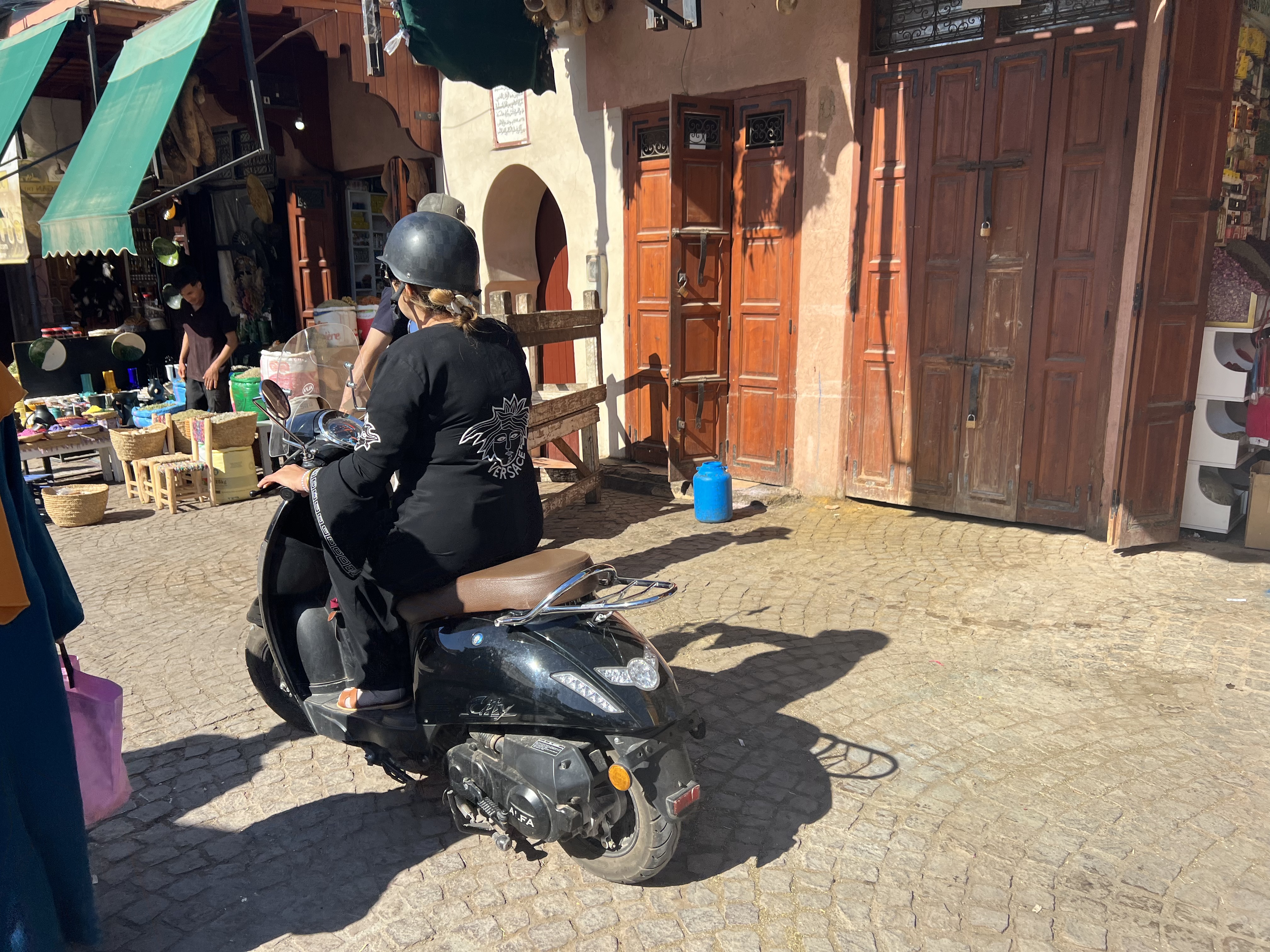
They must have a very ingenious scooter parking system because I have no idea how someone would get their scooter out of the three-deep parking area we saw.
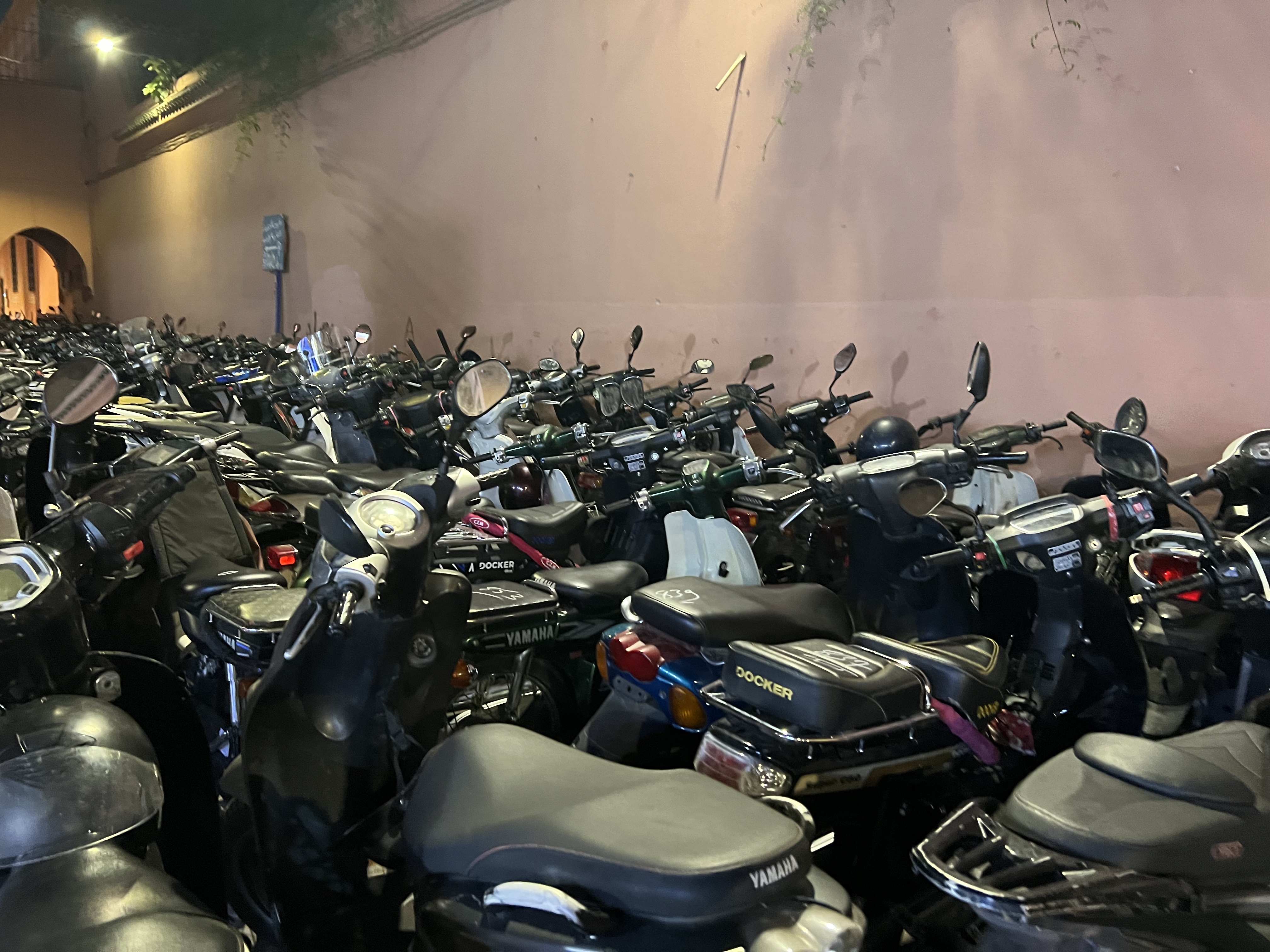
Leaving the narrow streets we walked into an open air market that was formerly the slave market in Marrakesh. The women selling hand-woven baskets and other items there covered their faces. We learned it was not for religious reasons but because they did not want their neighbors to recognize them and gossip about what they were doing.
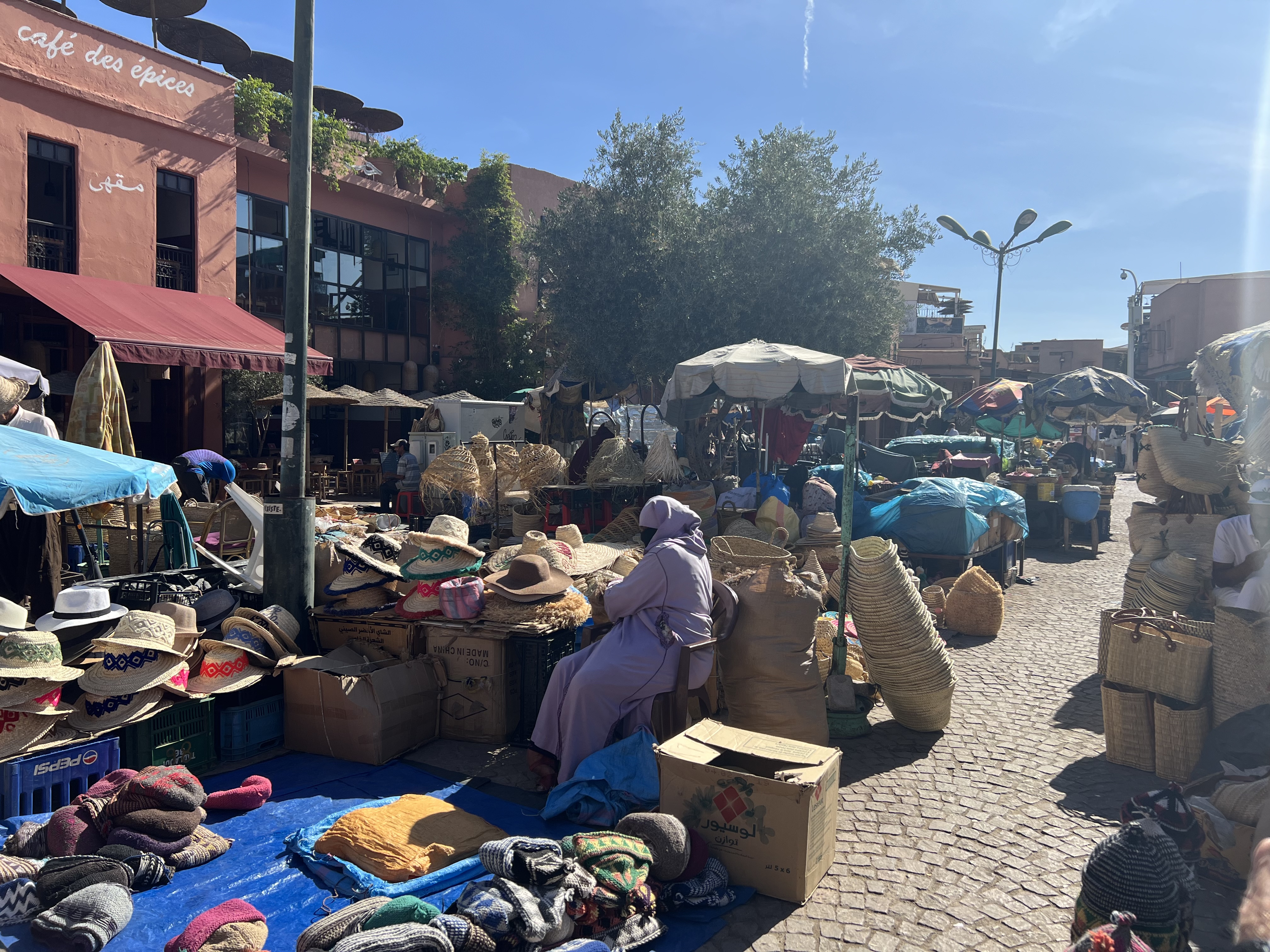
After the bright sun and intense activity at the Slave Market, it was delightful to enter the peace and tranquility of Le Jardin Secret. The Secret Garden, a beautiful 400-year-old palatial estate, is composed of two adjoining gardens- a botanical garden and an Islamic garden.
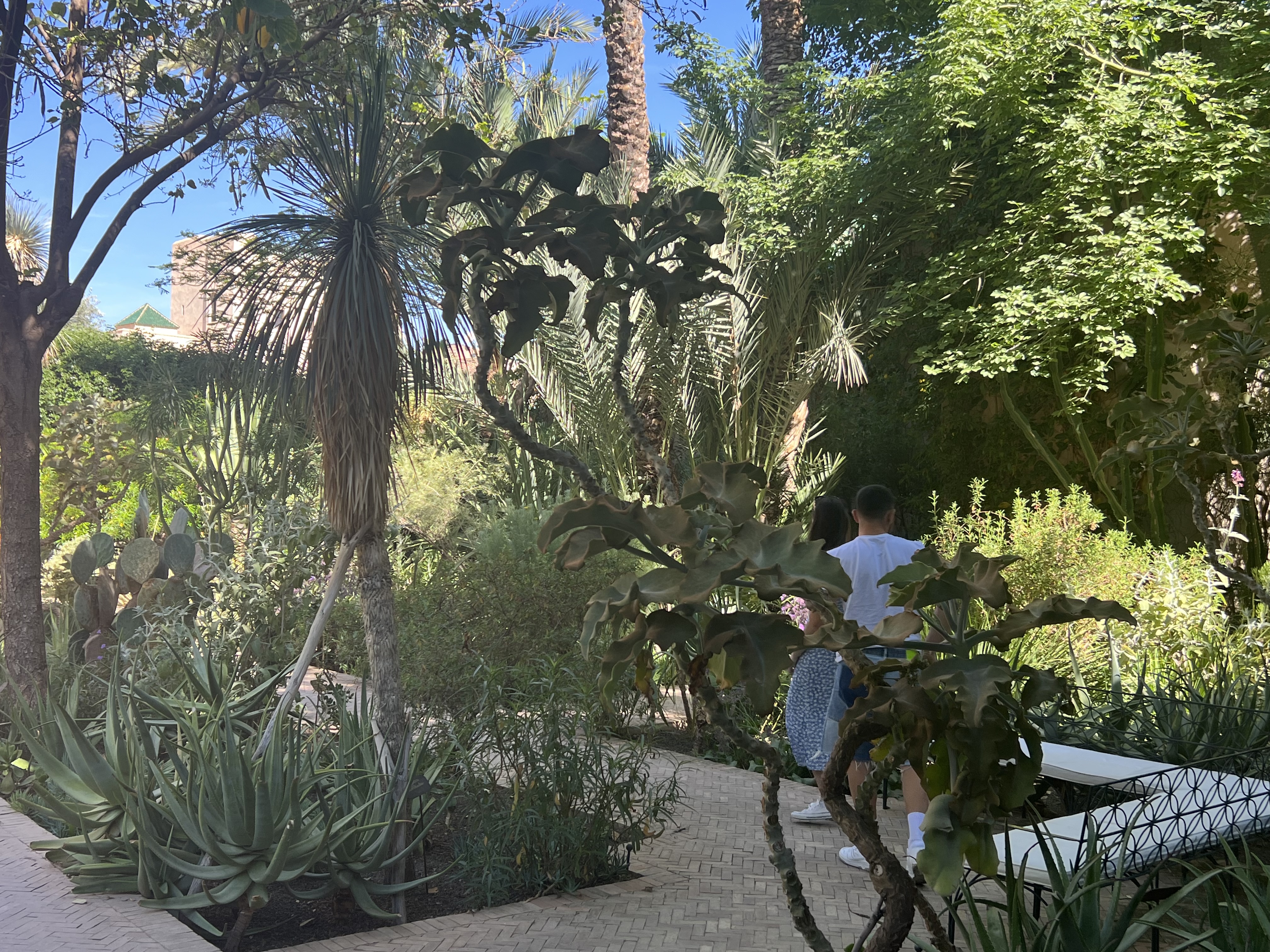
The gardens still use the original, 400 year-old irrigation system that encircles the plants and trees.
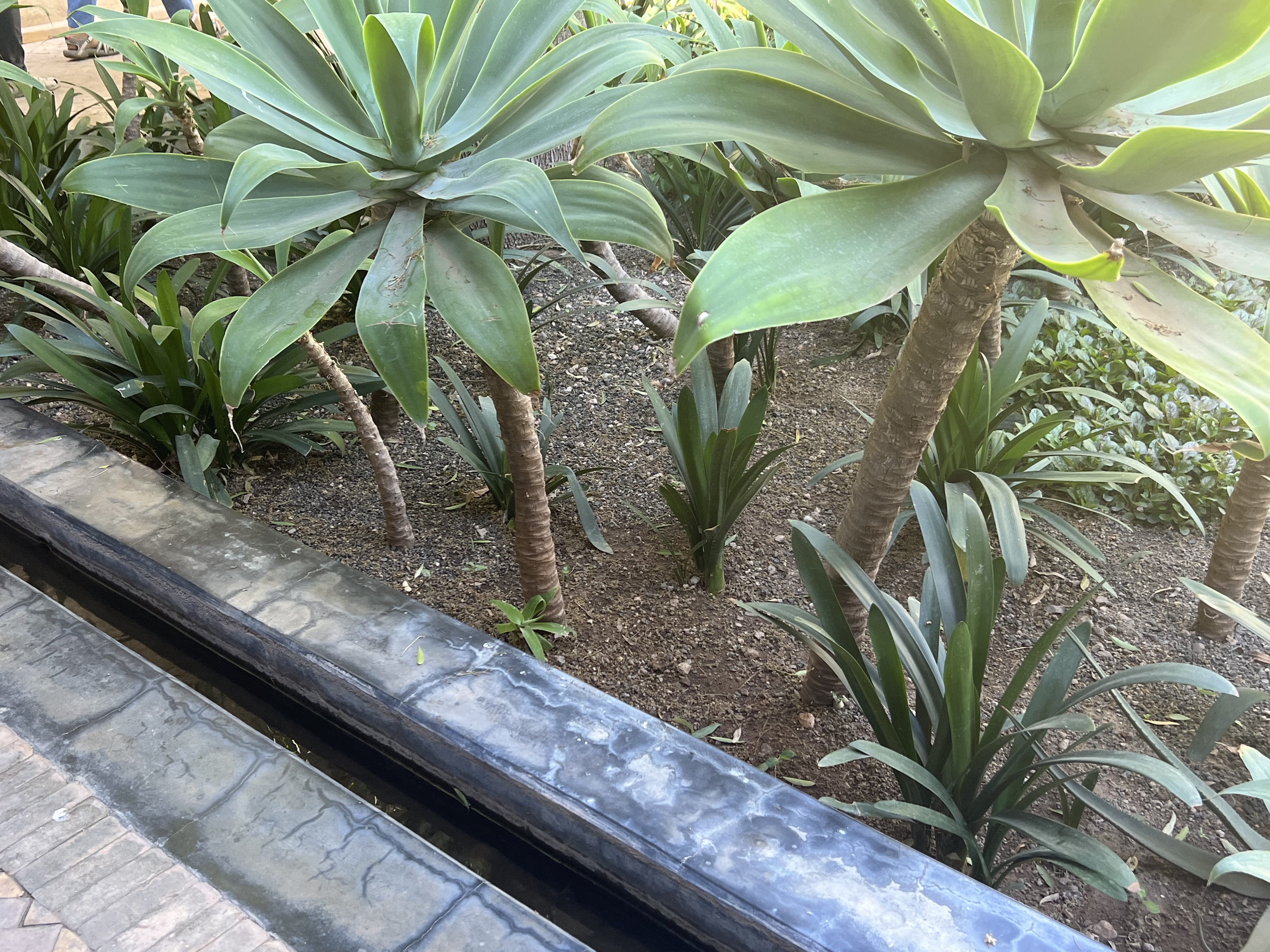
Next stop was the Palais Saadien where we learned about the beautiful rugs Berber women wove. At the entrance, we saw the large looms the women used.
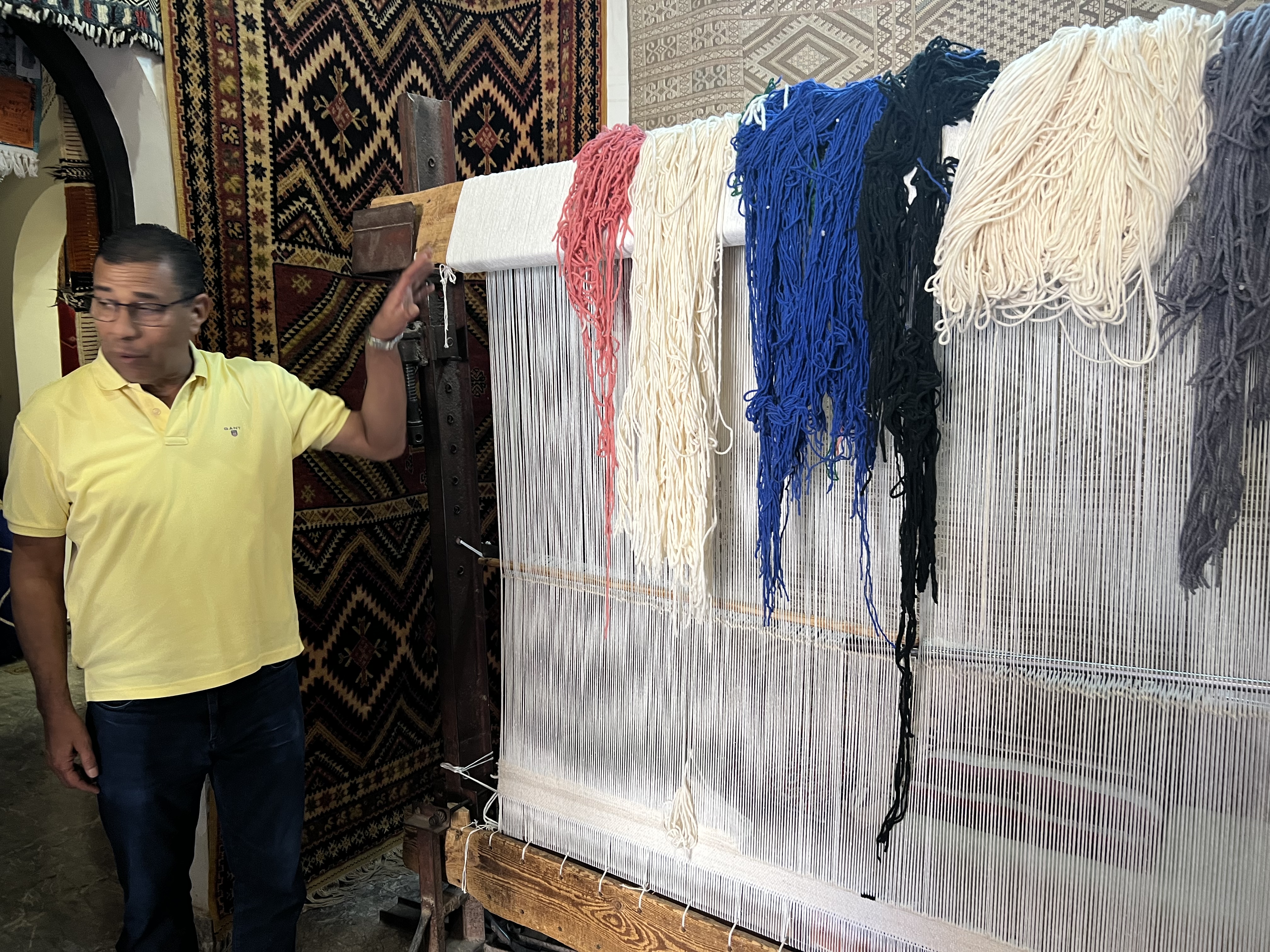
The workers kept unrolling one beautiful hand-made Berber rug after another.
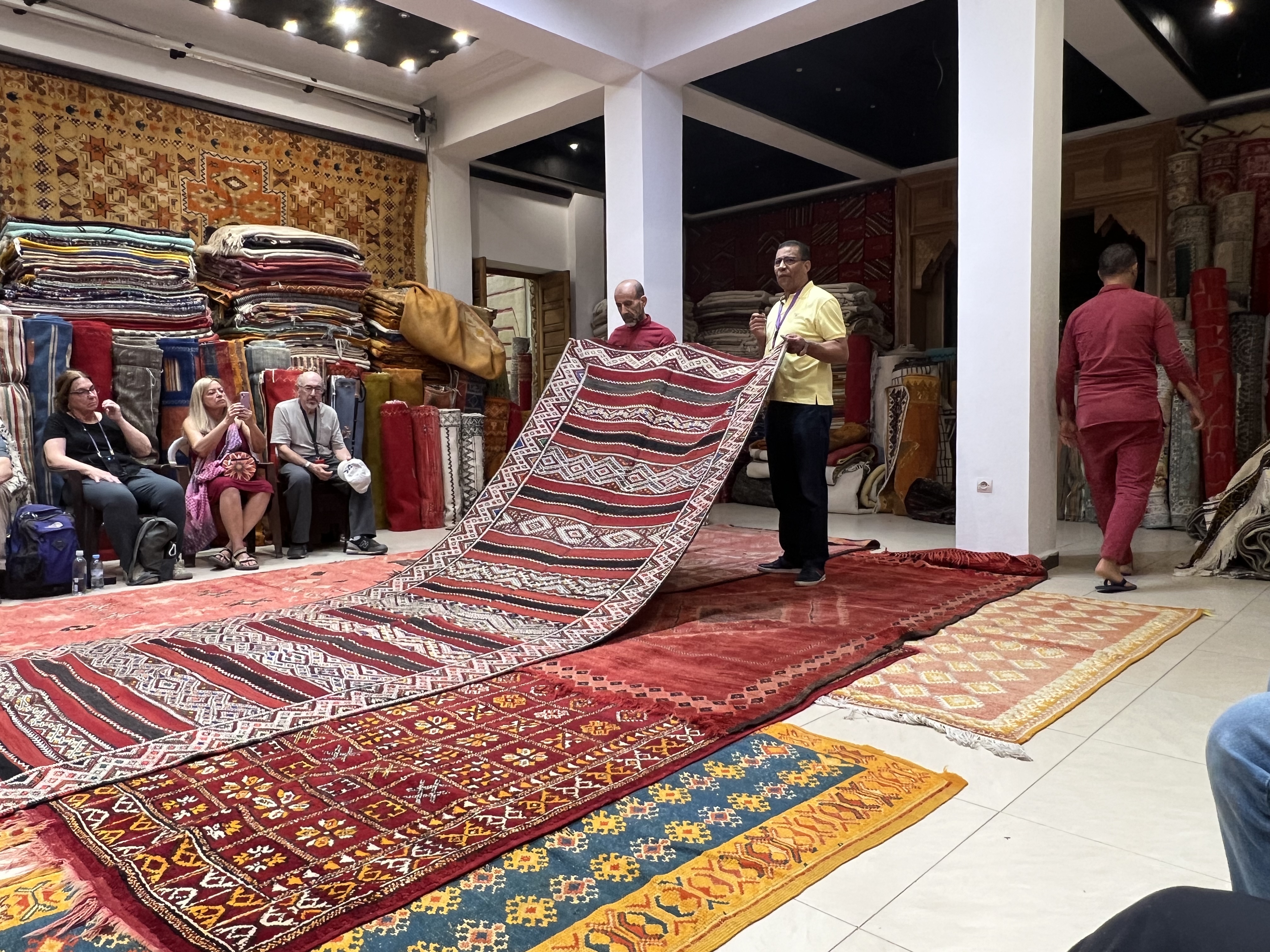
Spice Market
Abdou took us to his favorite spice market. We passed numerous spice stalls on the way that Abdou said were for tourists before arriving at a small doorway leading to an unassuming shop.
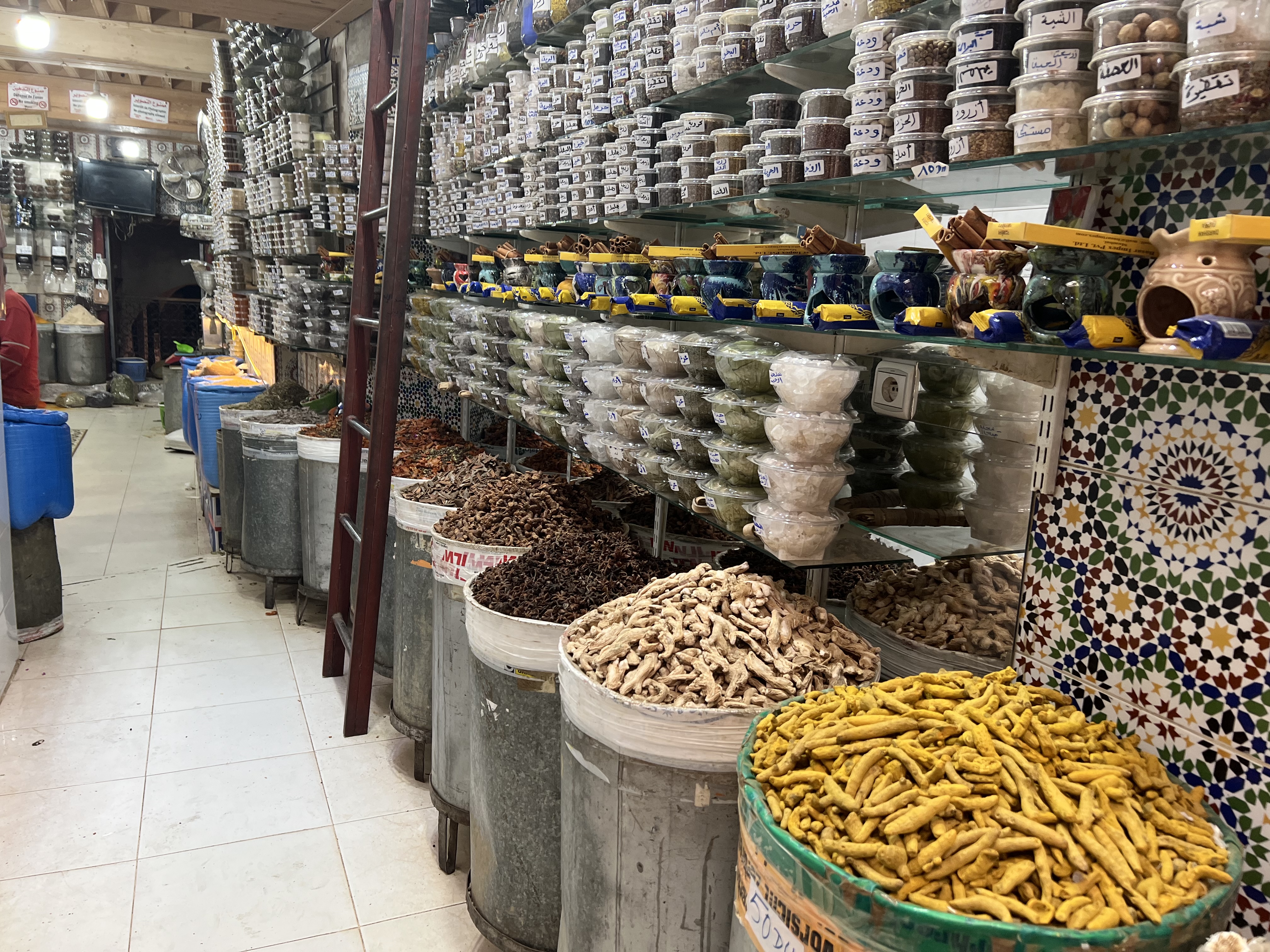
Walking into the shop was like walking into a spice laboratory.
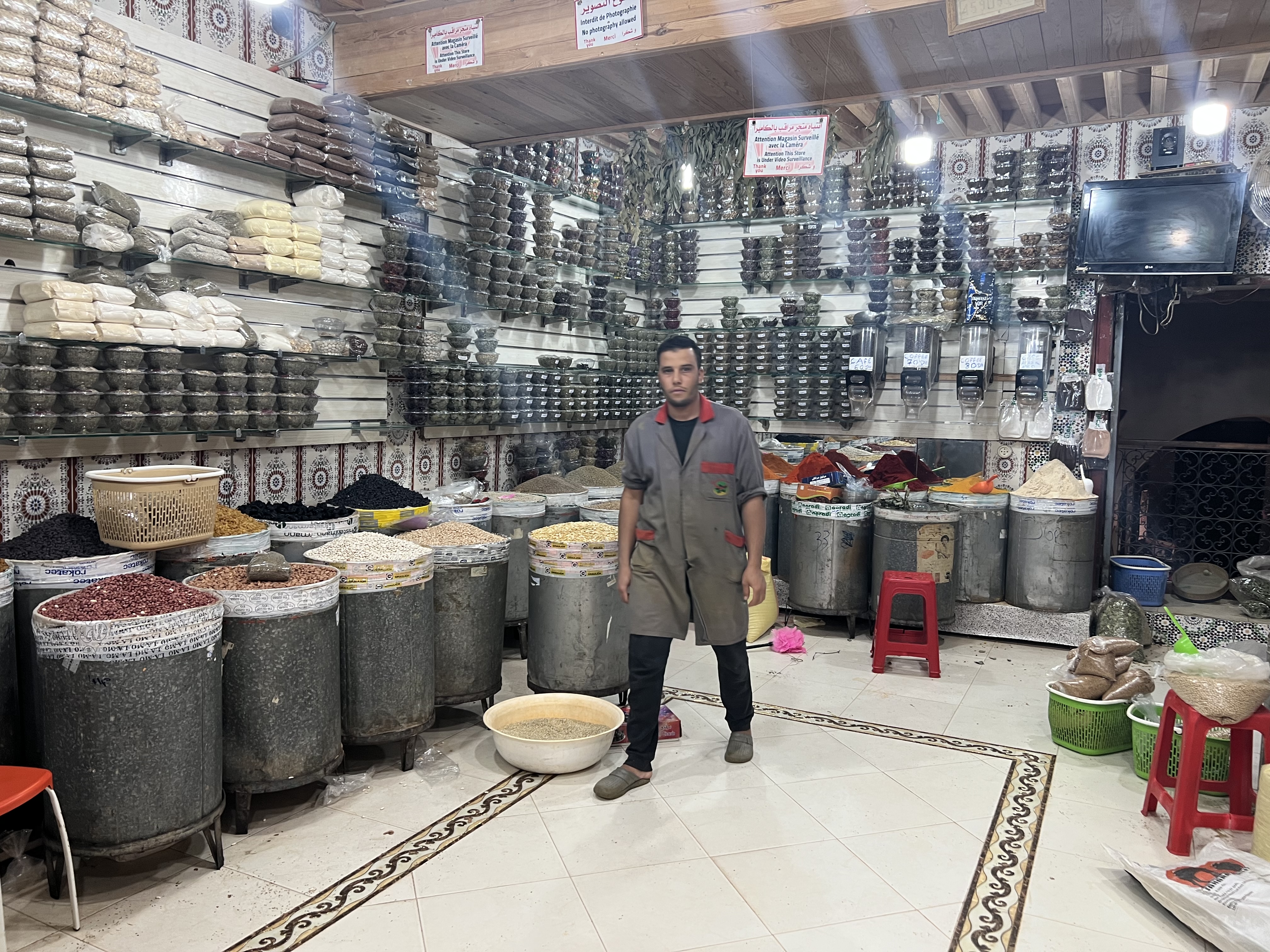
The special Moroccan spice. blends came whole. We chose the amount we wanted, and Mustapha had one of his assistants grind them for us.
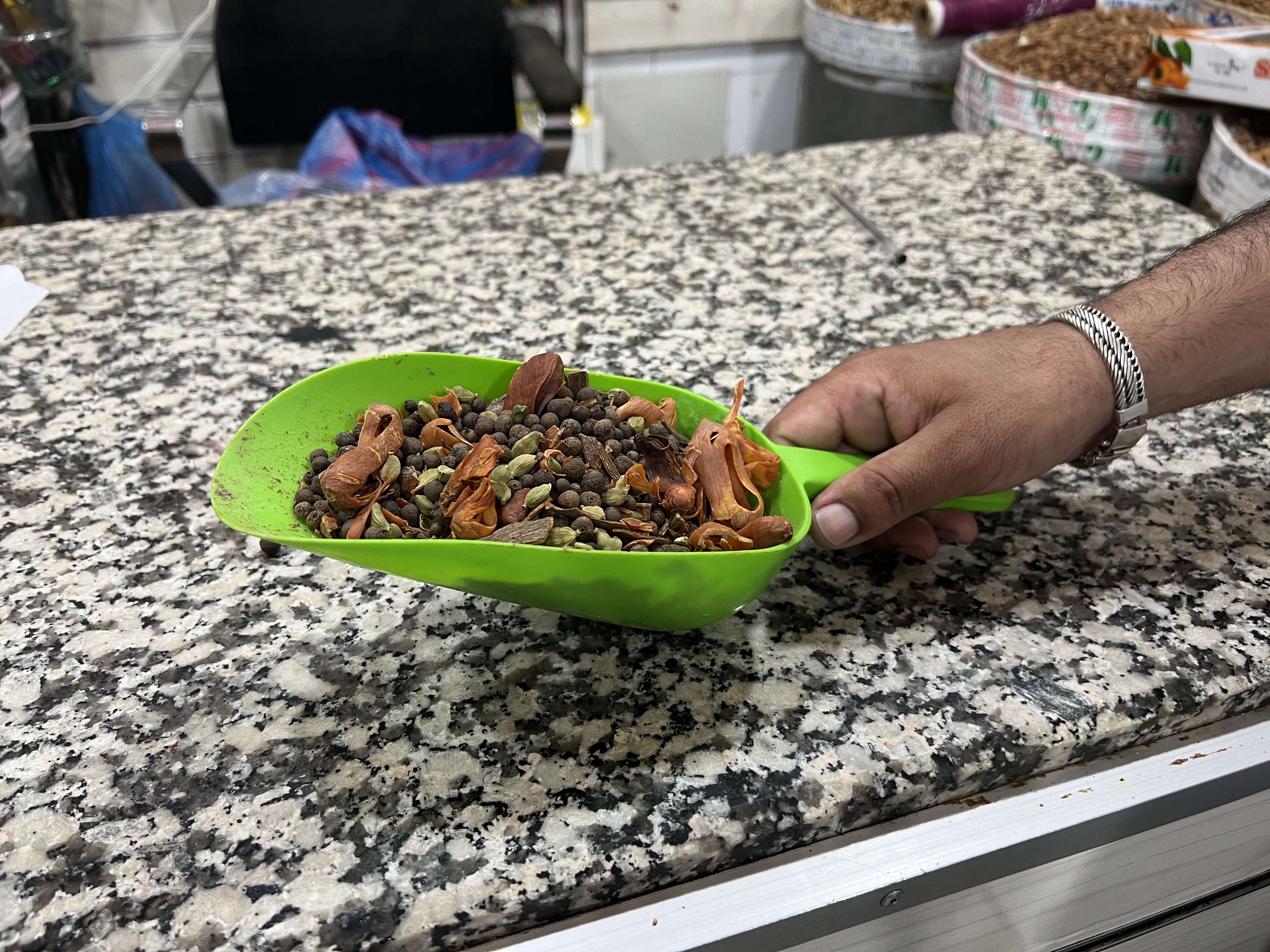
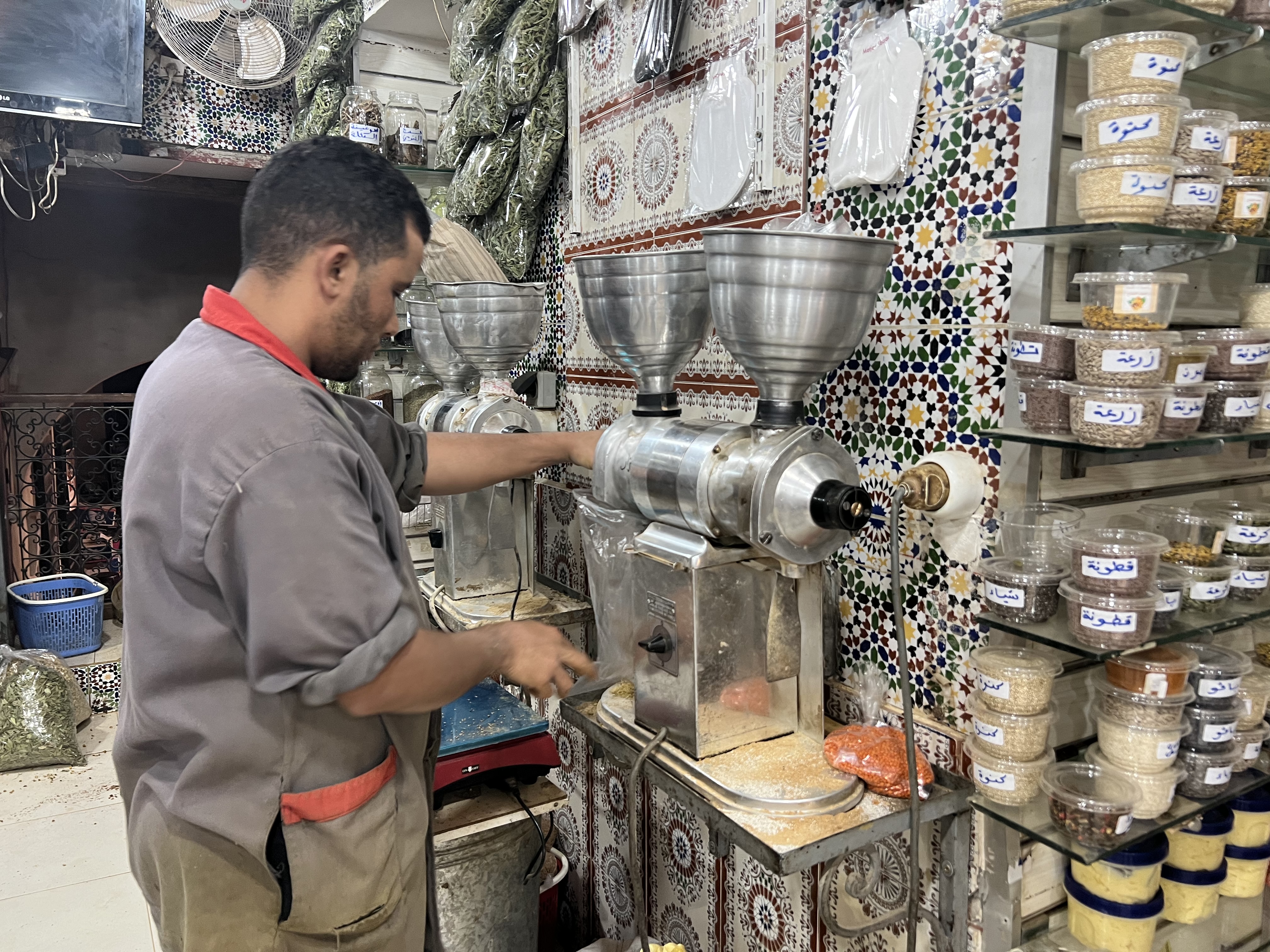
We made a quick stop on the way to the spice store to talk with Abdelghani who makes jewelry, purses, frames and pots from old tires. His creations were quite beautiful.
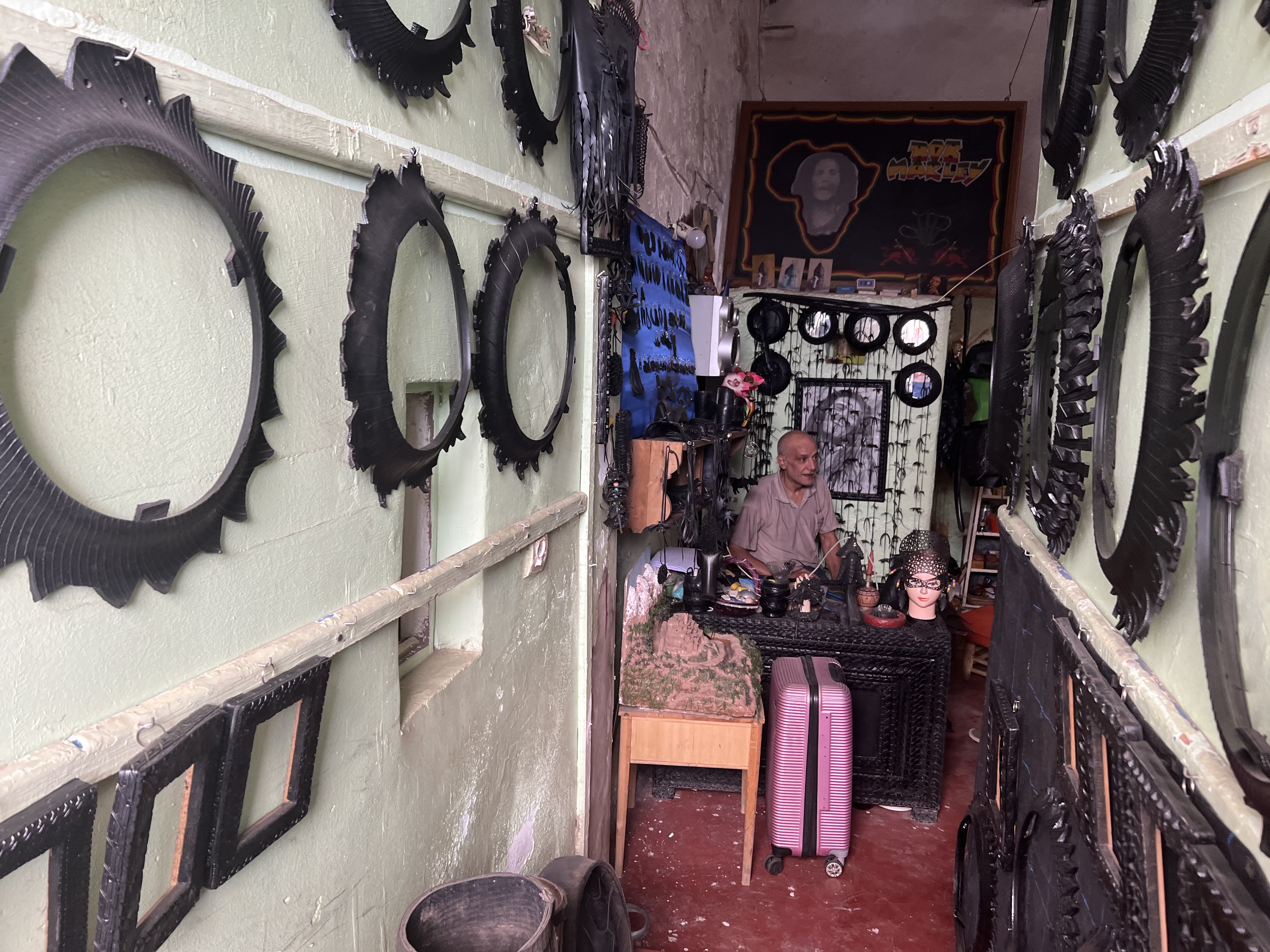
Evening in Marrakesh
We took a lovely horse-drawn caleche, (carriage) ride around Marrakesh and saw the new part of the city. It was quite a change from the medina where we were staying.
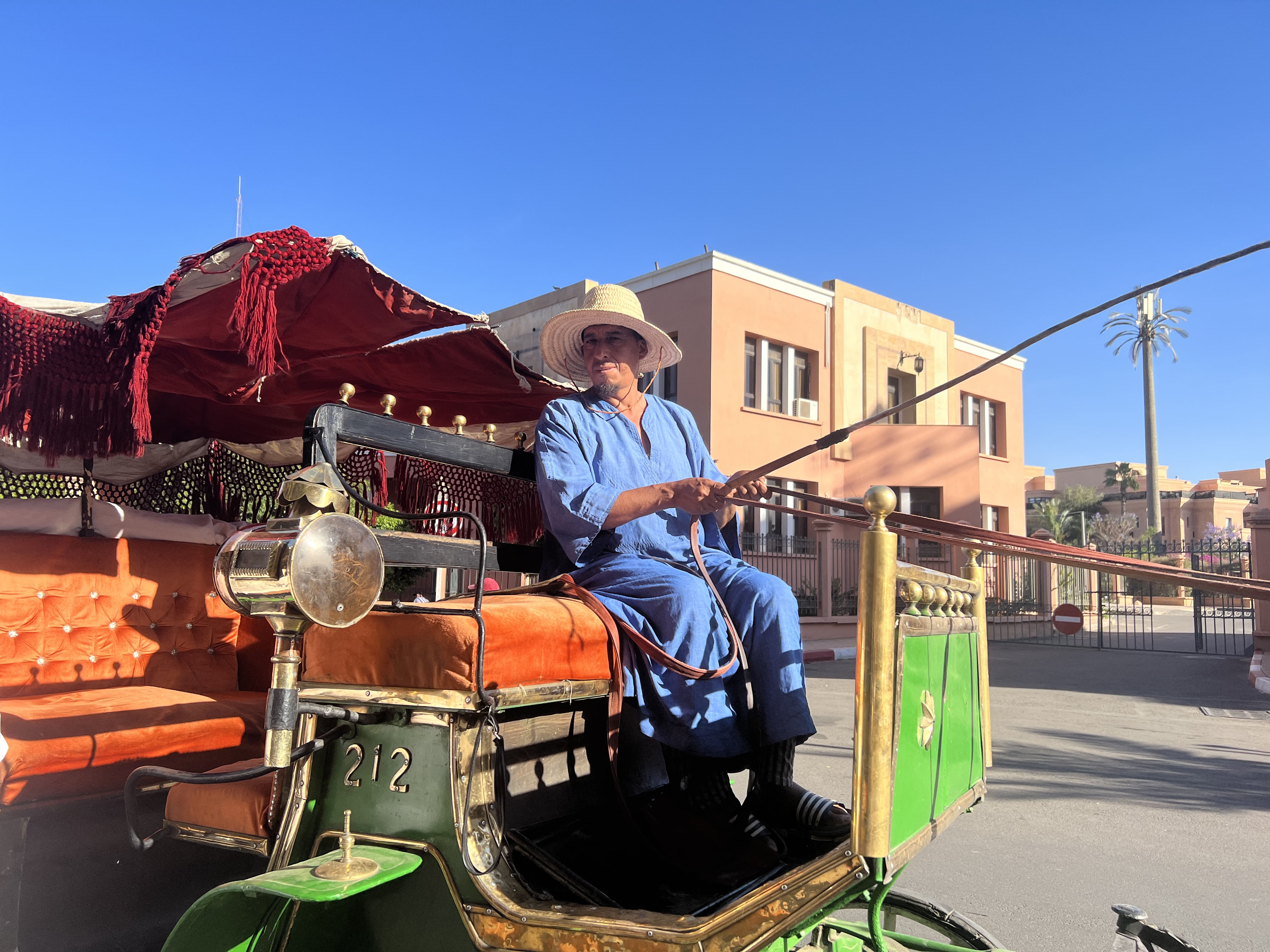
The carriage dropped us off at a lovely new French Moroccan restaurant. After two weeks of eating and living in places that are hundreds of years old, it felt a little strange to be in such a modern setting.
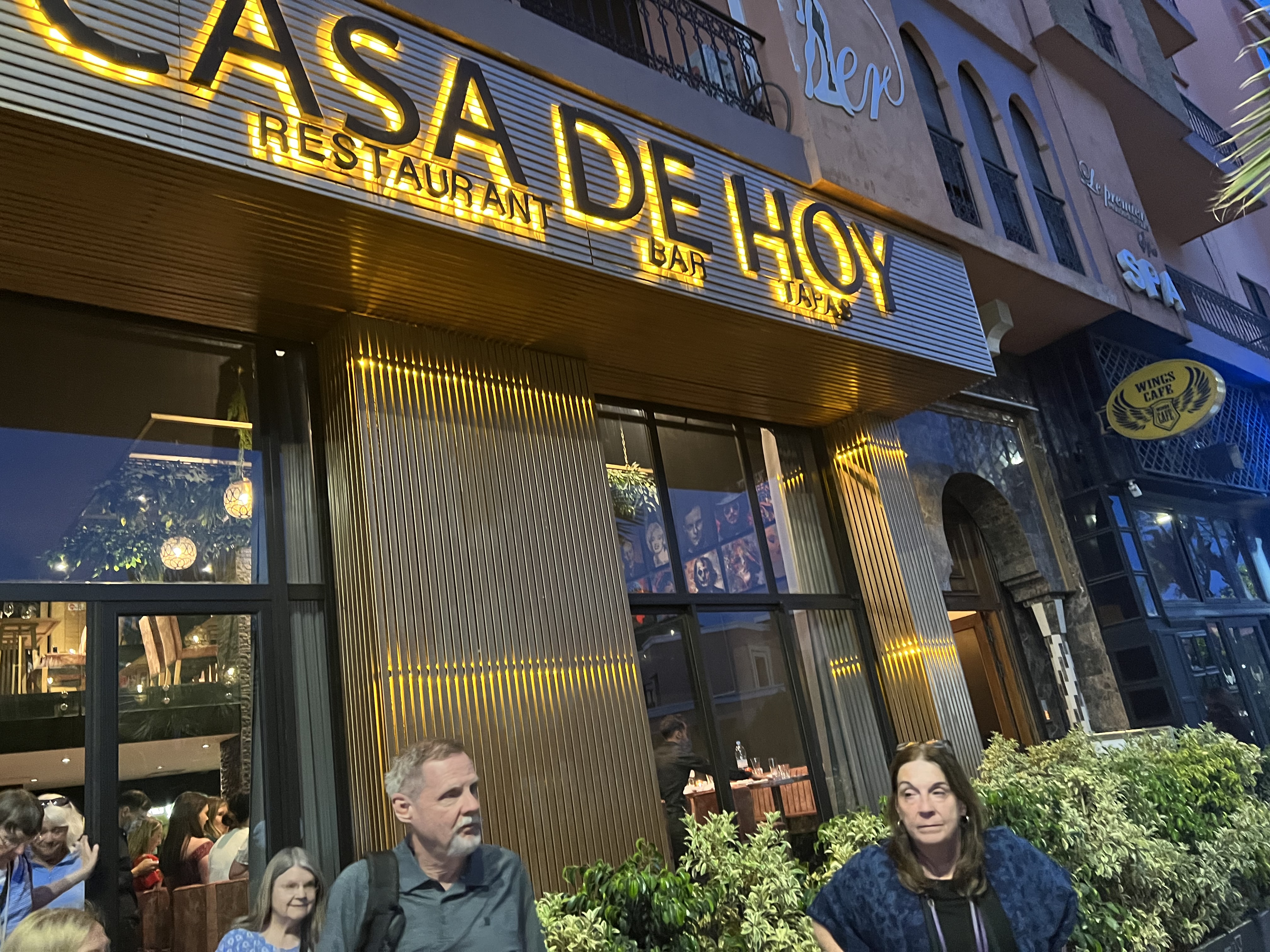
I tried the Moroccan-specialty gray wine, a slightly pinkish-tinted white wine made from red grapes. Gray wine was a first for me, and I liked the spicy flavor.
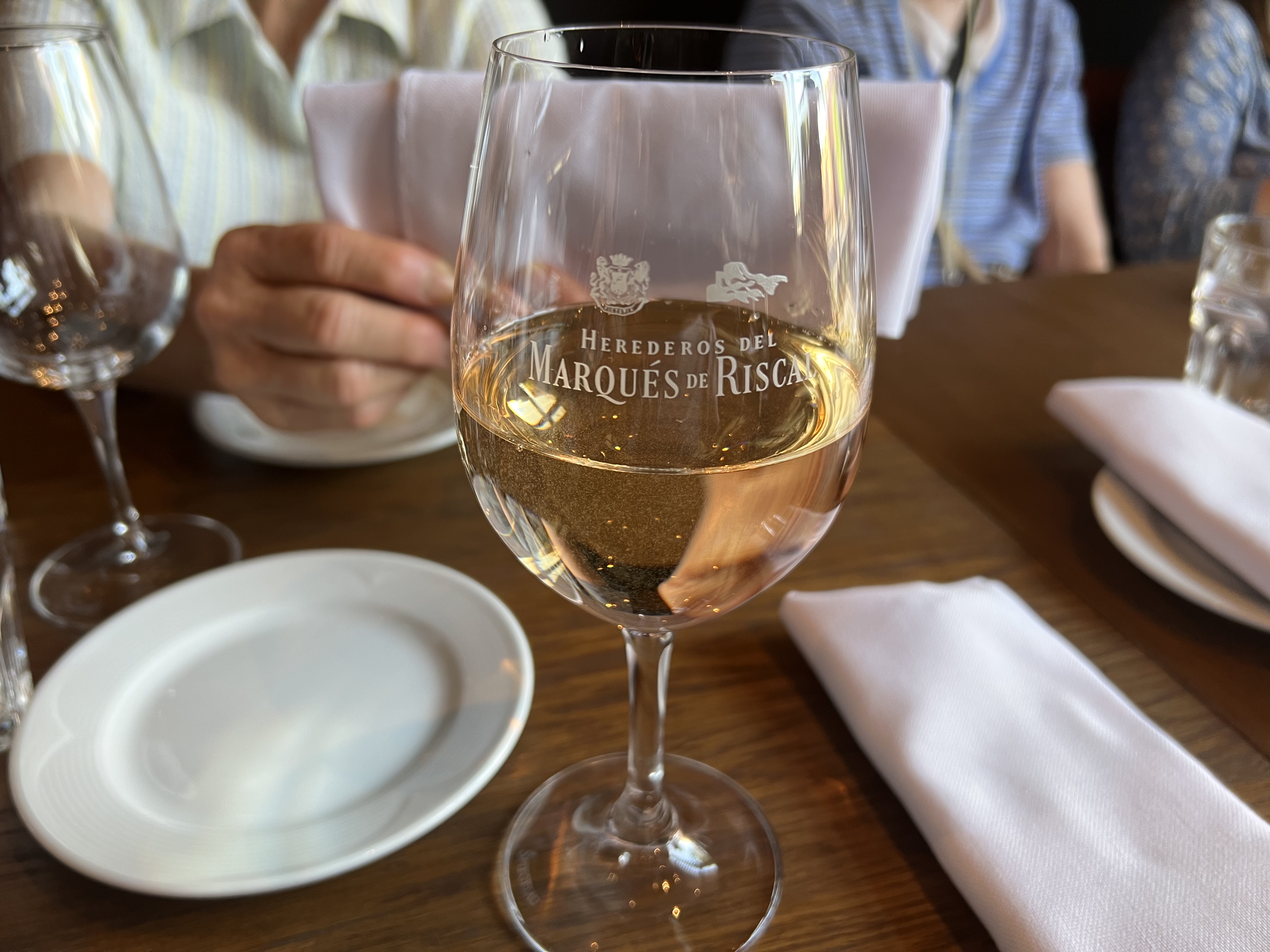
Marrakesh, Day 3
Our last day in Marrakesh was a museum day. We started with the amazing Museum of Water Civilization, completed in 2017. There are only seven water museums in the world, two in Africa and one in the US.
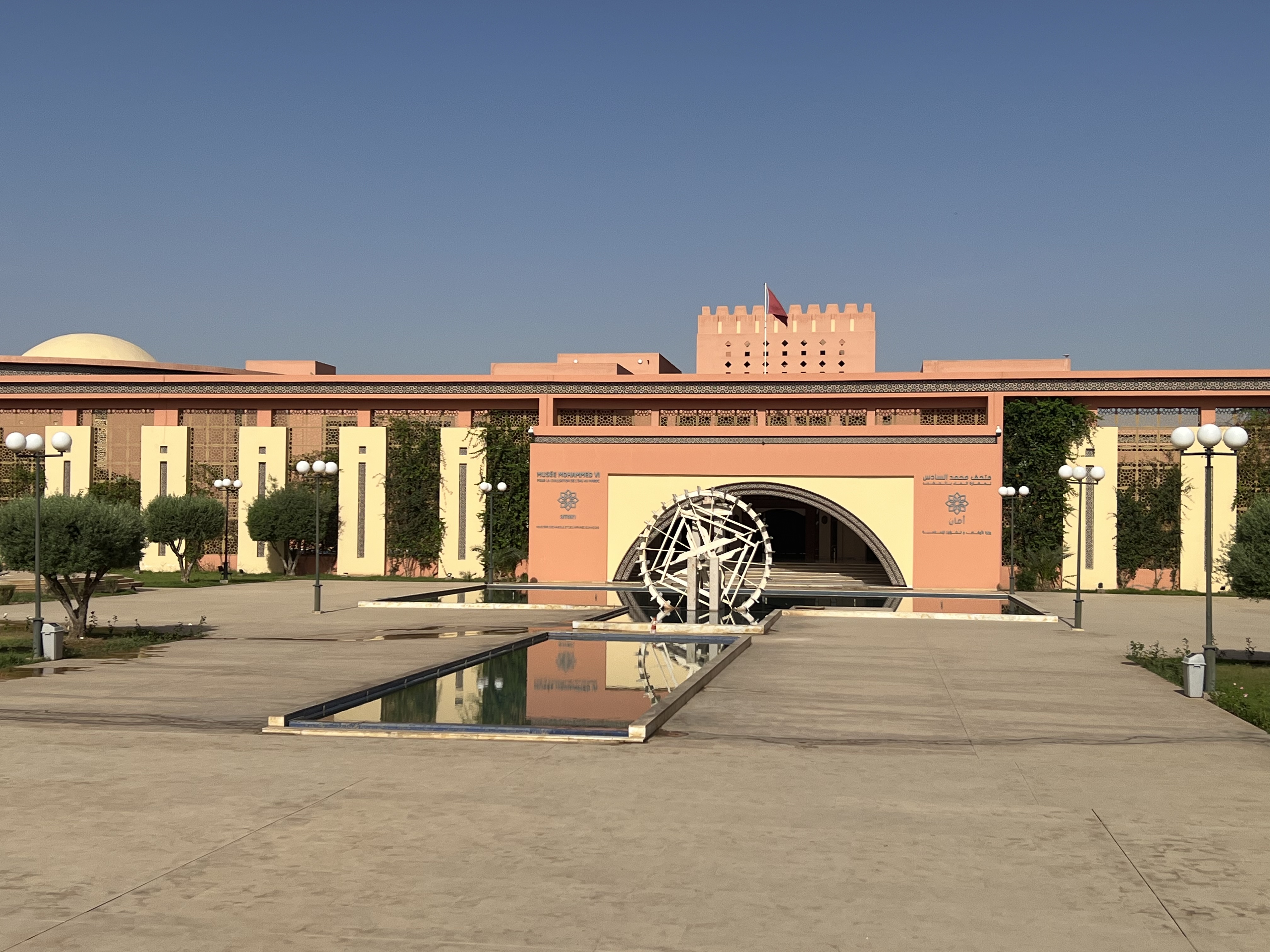
The beautifully laid out museum presented a history of water use, innovative ways the need for water has been addressed, and the future of water use. Villagers in some areas still use ancient techniques, such as using water gravity to mill grains. .
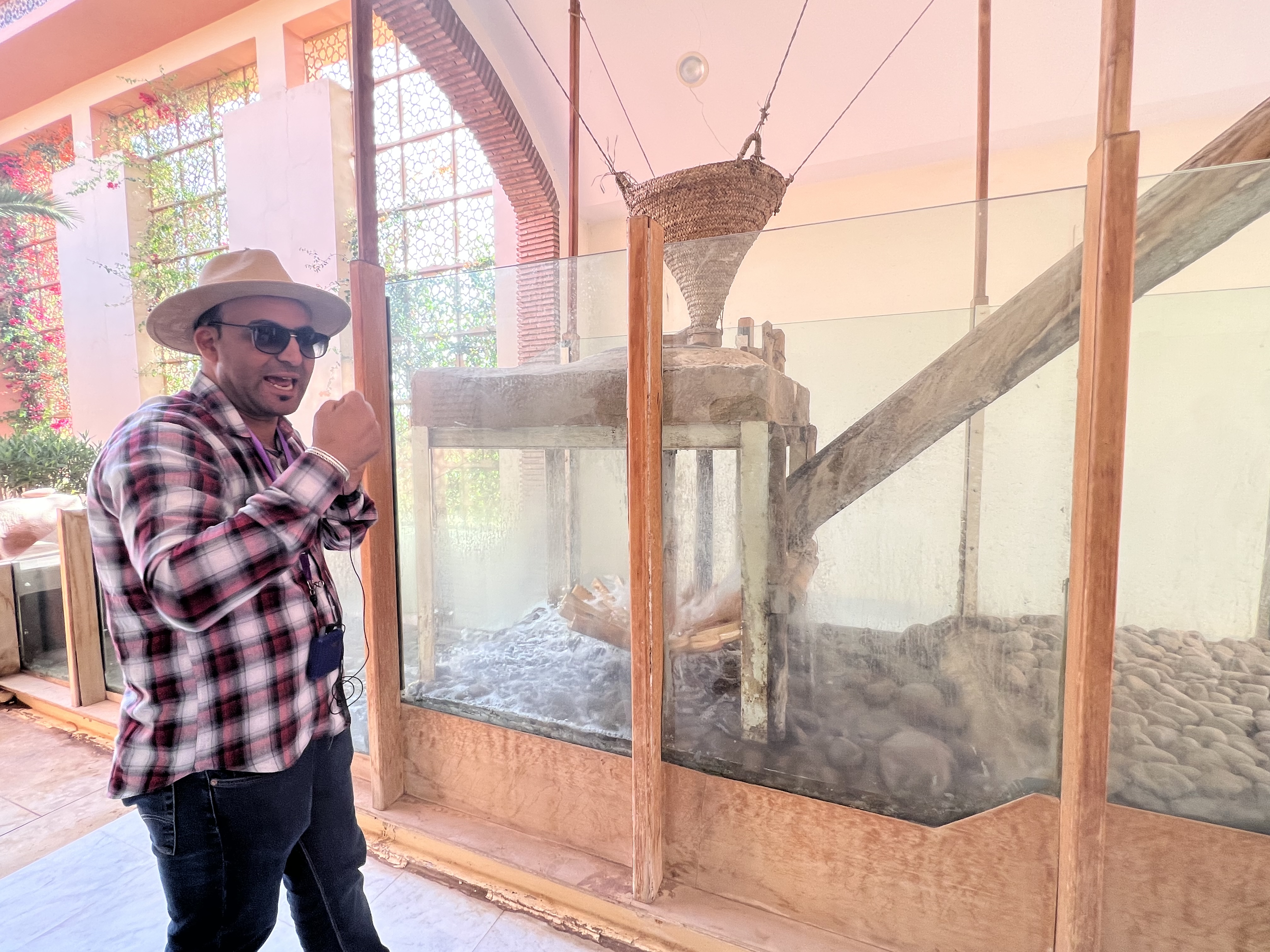
The displays about social water conservation and how tribes worked to fairly distribute water were very interesting.
Majorelle Gardens
Our last visit of the day was Majorelle Gardens, the stunning garden and home built by French artist Jacques Majorelle. The garden fell into neglect after his death in 1962. In the 1980s, Yves St. Laurent and his partner Pierre Berget bought and restored the neglected garden.
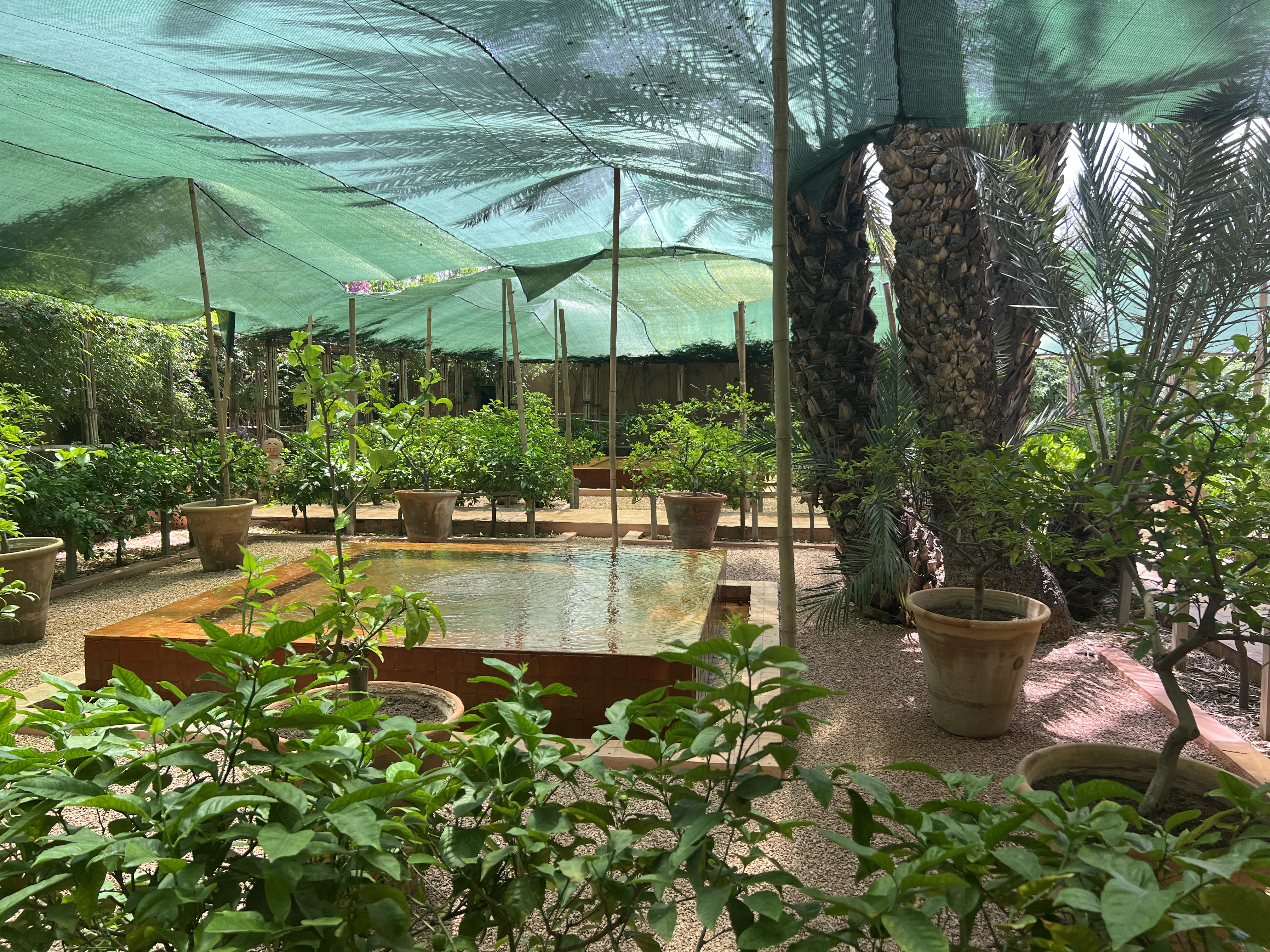
Interestingly, Morocco bans homosexuality but appears to have embraced Yves St. Laurent and his Majorelle estate. When he died in 2008, he was cremated and his ashes scattered around his house. It costs $3,000 to visit his private home.
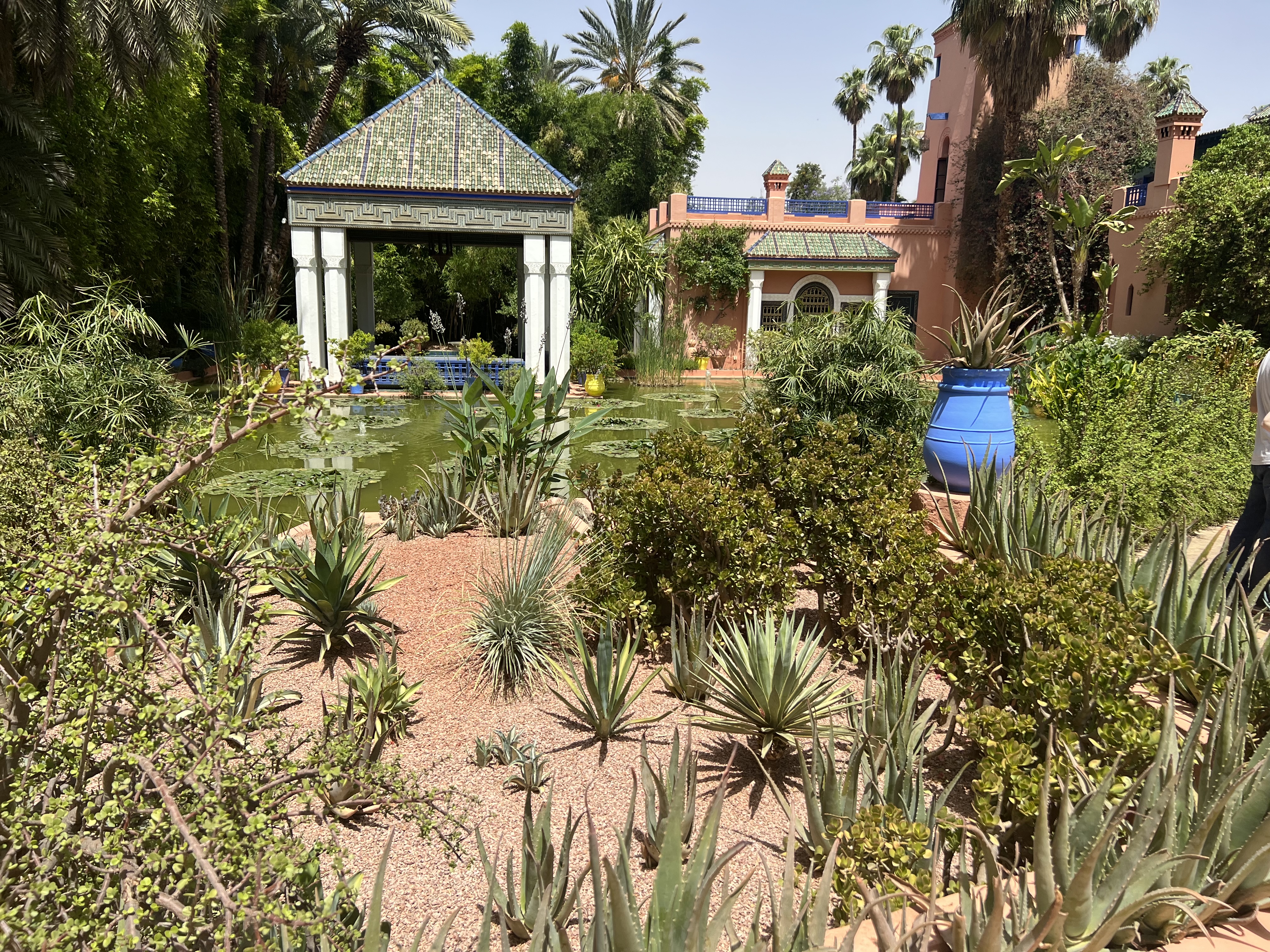
Vibrant blue paint, known as Majorelle blue, adorns the outside of the beautiful Berber museum on the grounds.
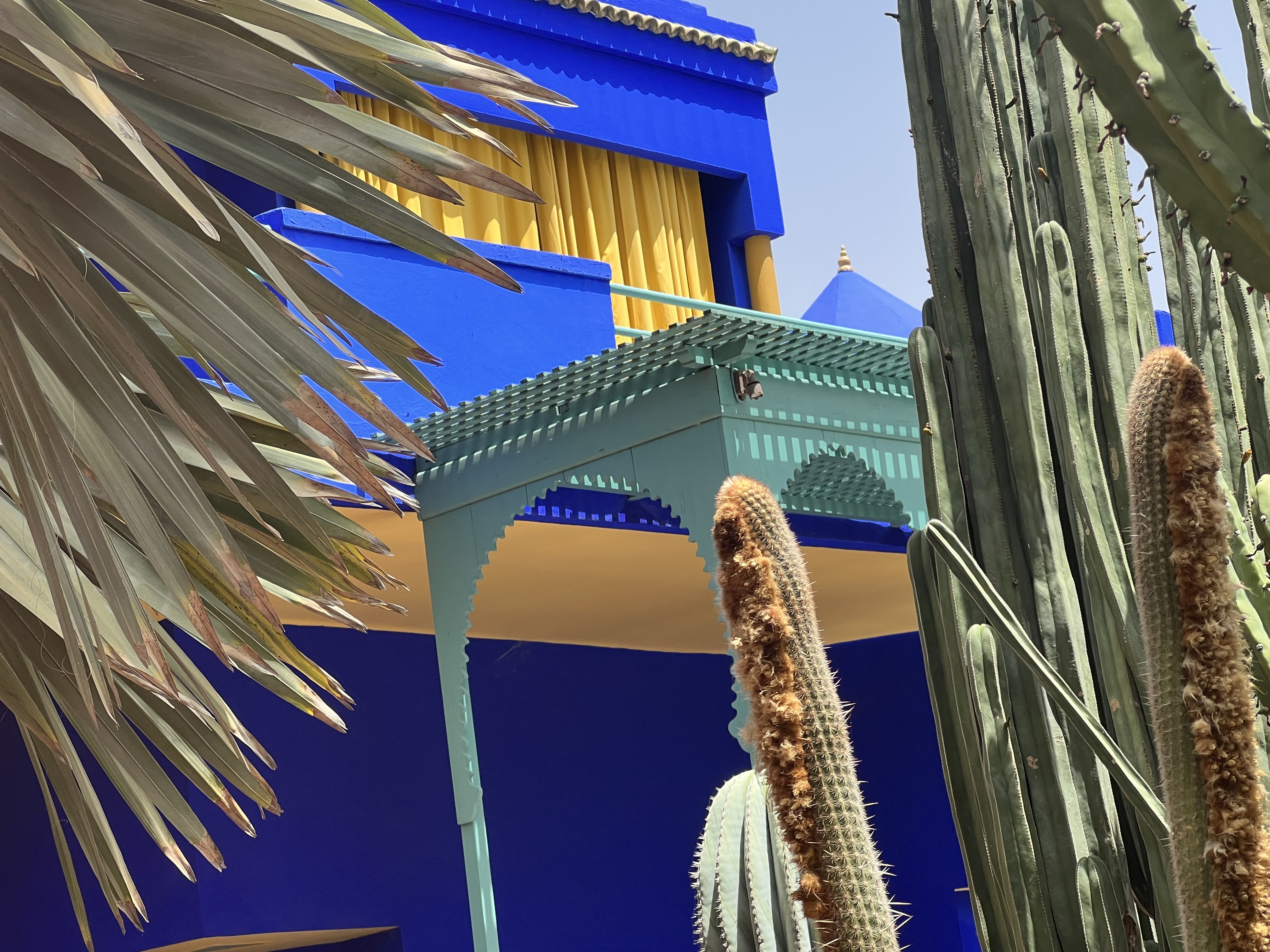
Farewell, Marrakesh
On our last night in Marrakesh, we celebrated a wonderful trip at our Farewell Dinner. We shared highlights and favorite moments and thanked Abdou, our leader extraordinaire, for giving us a magical two-week adventure.
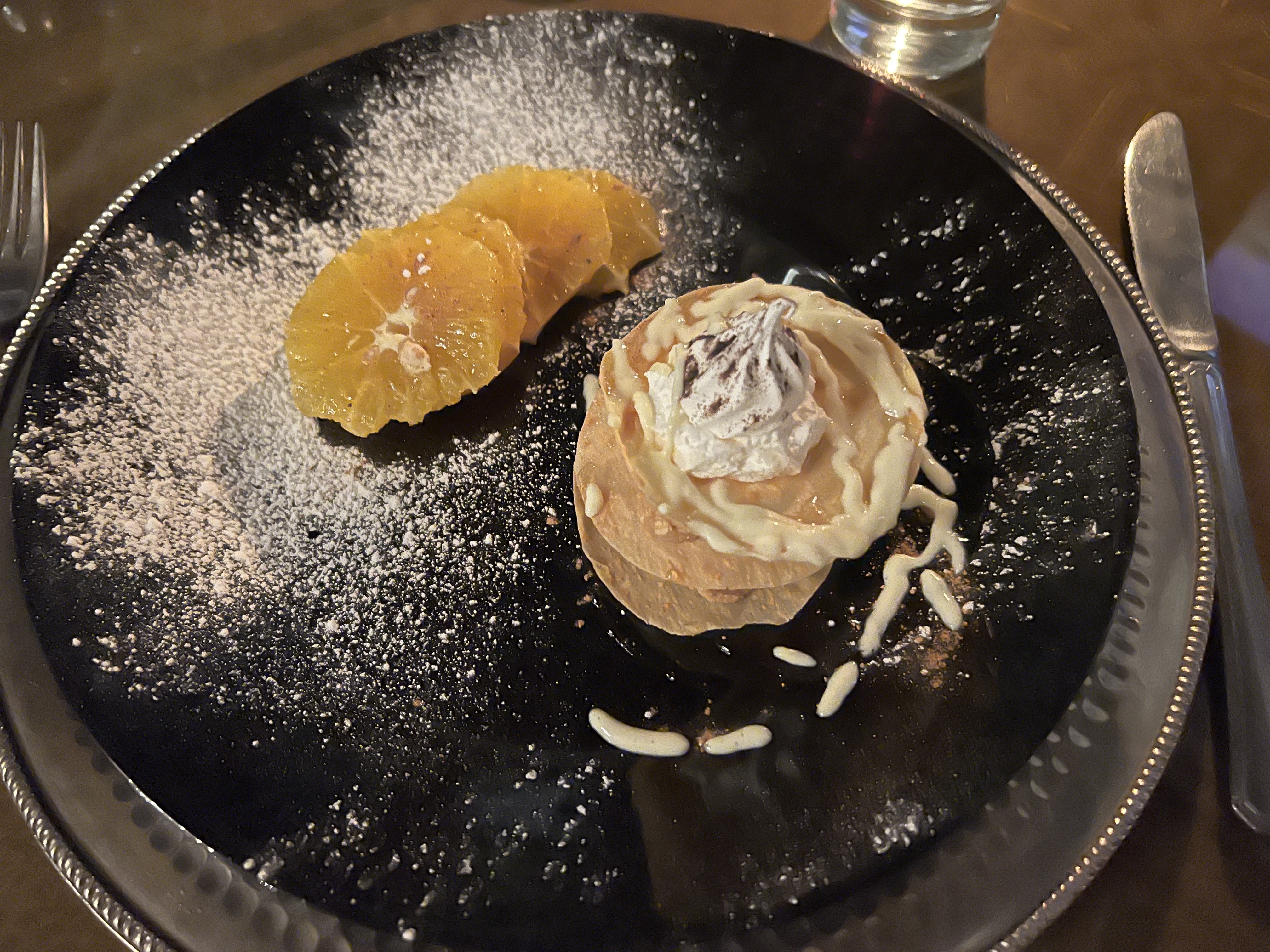
Tomorrow we leave this vibrant city and go to Casablanca for the last day of our Moroccan adventure.
